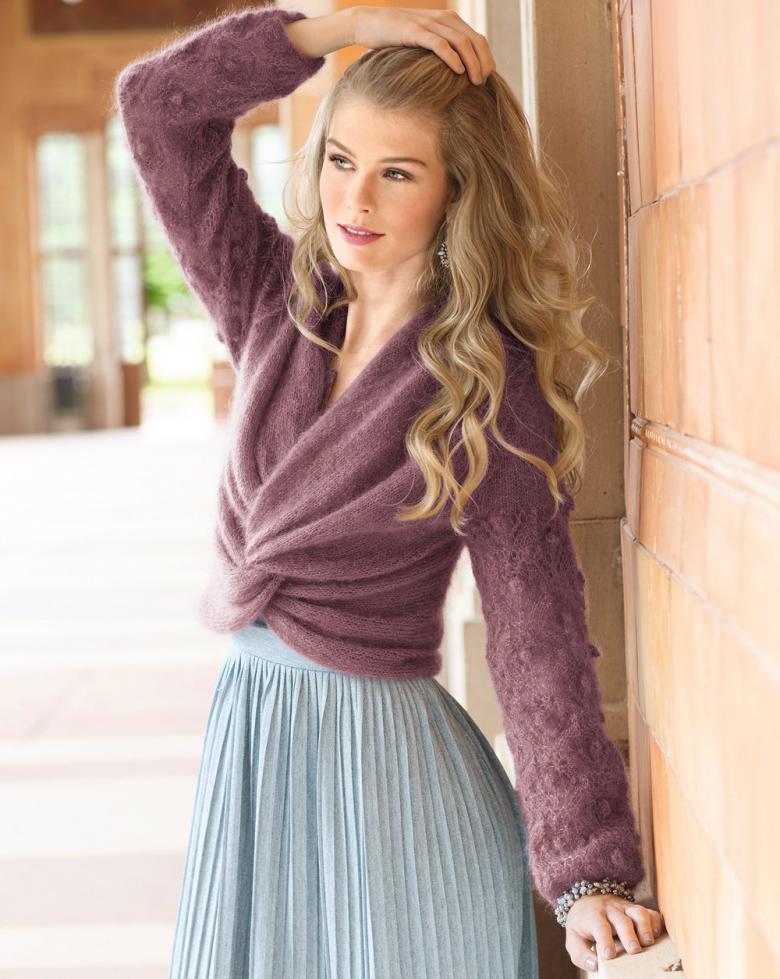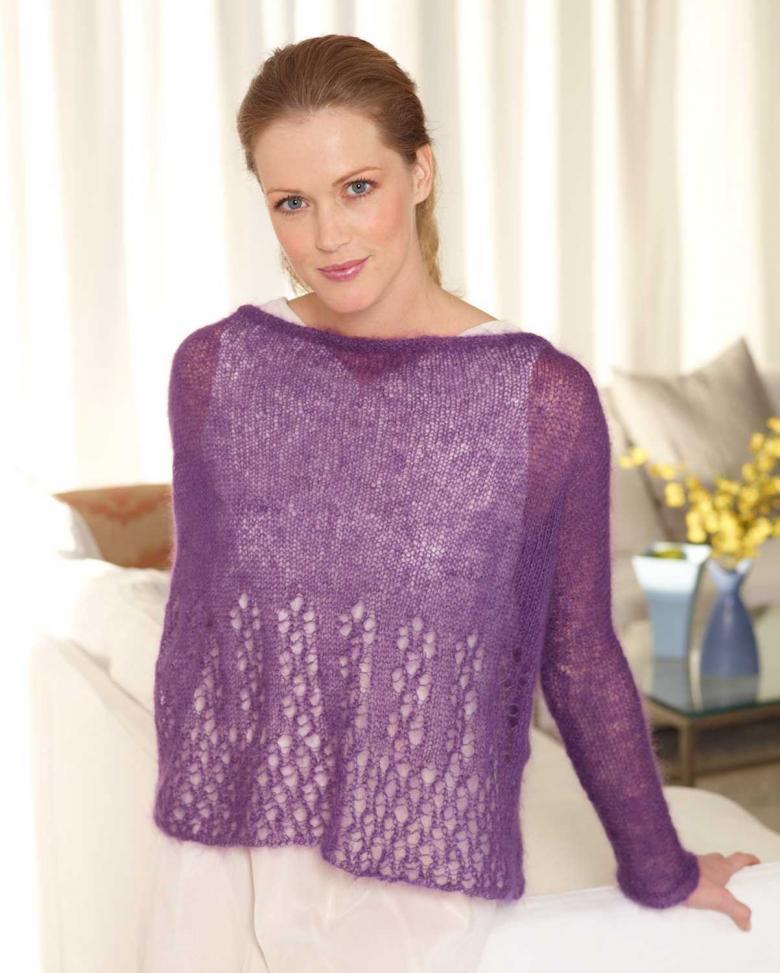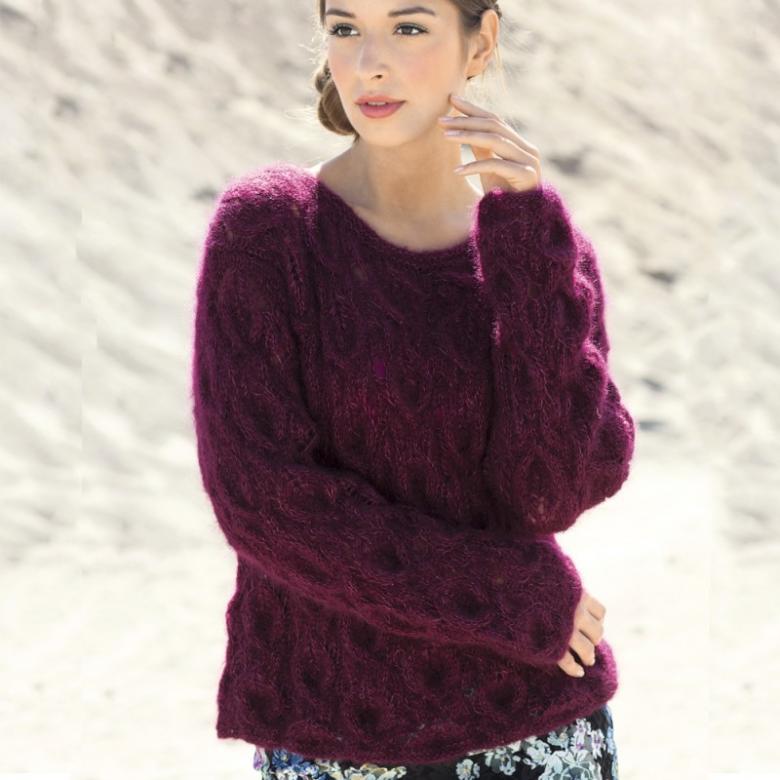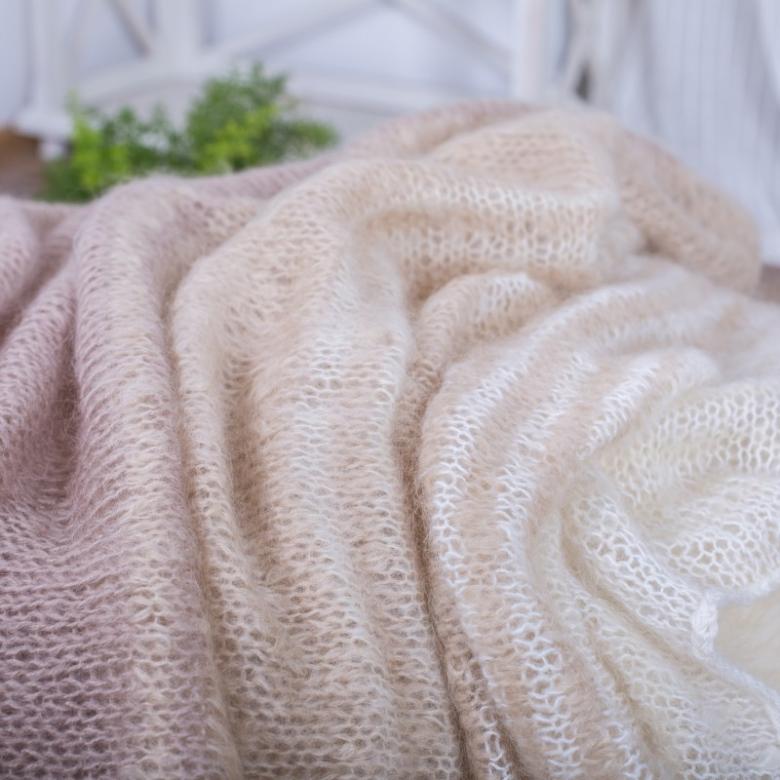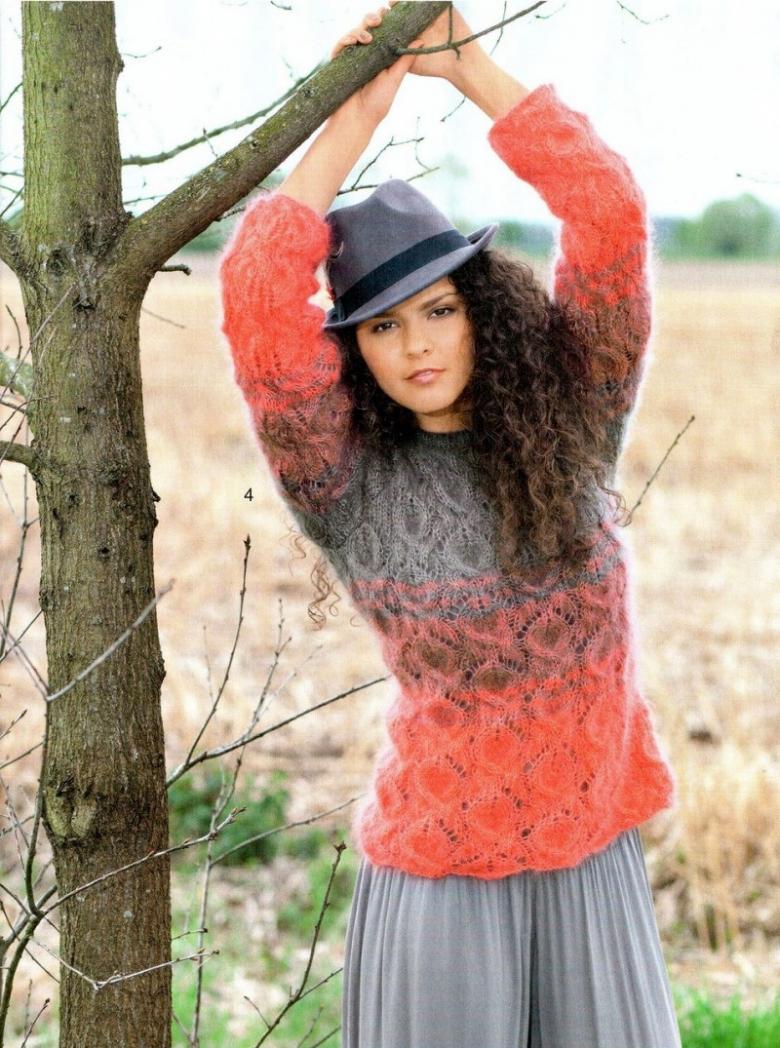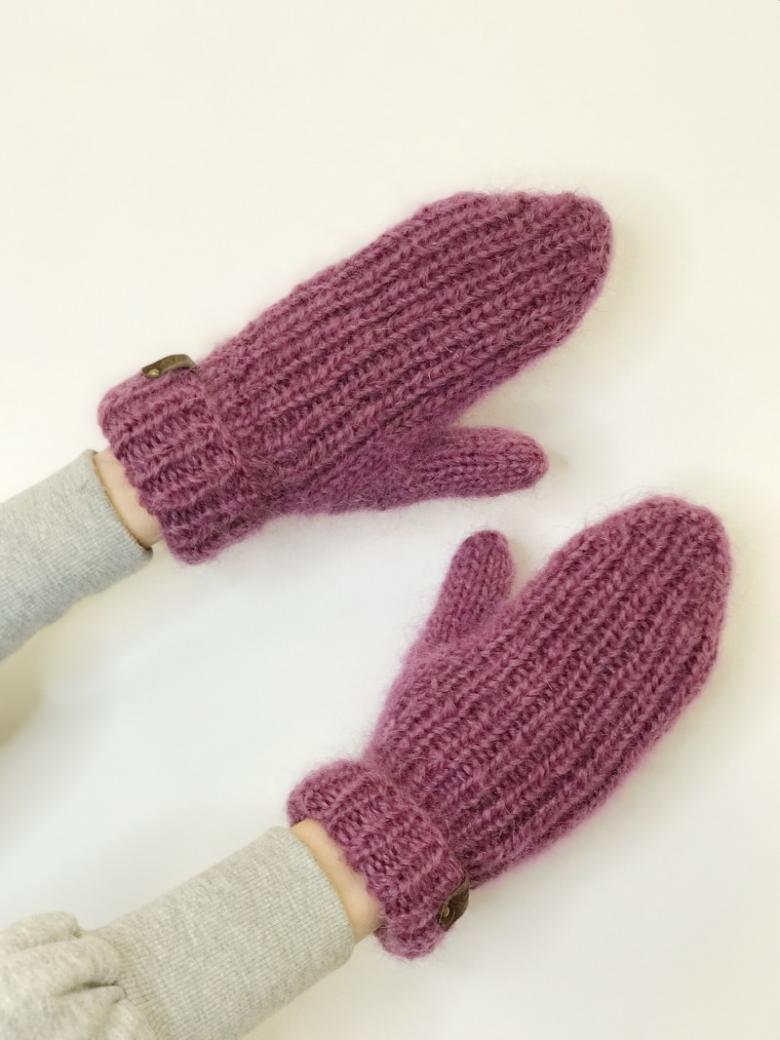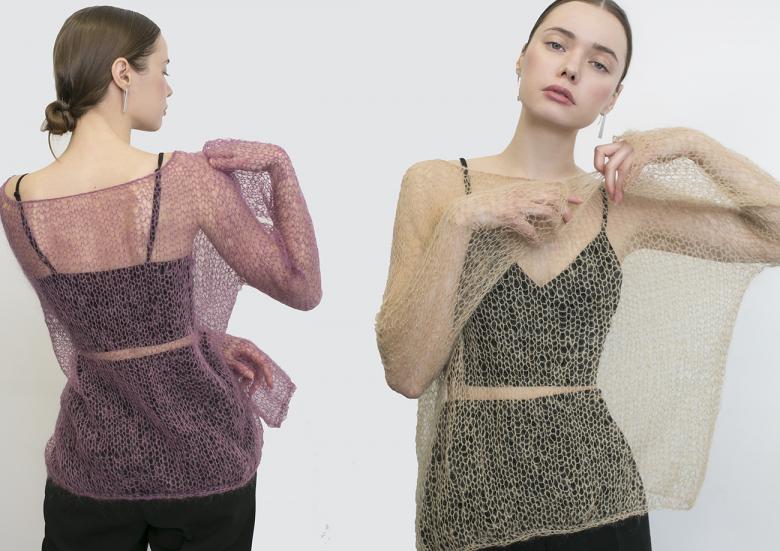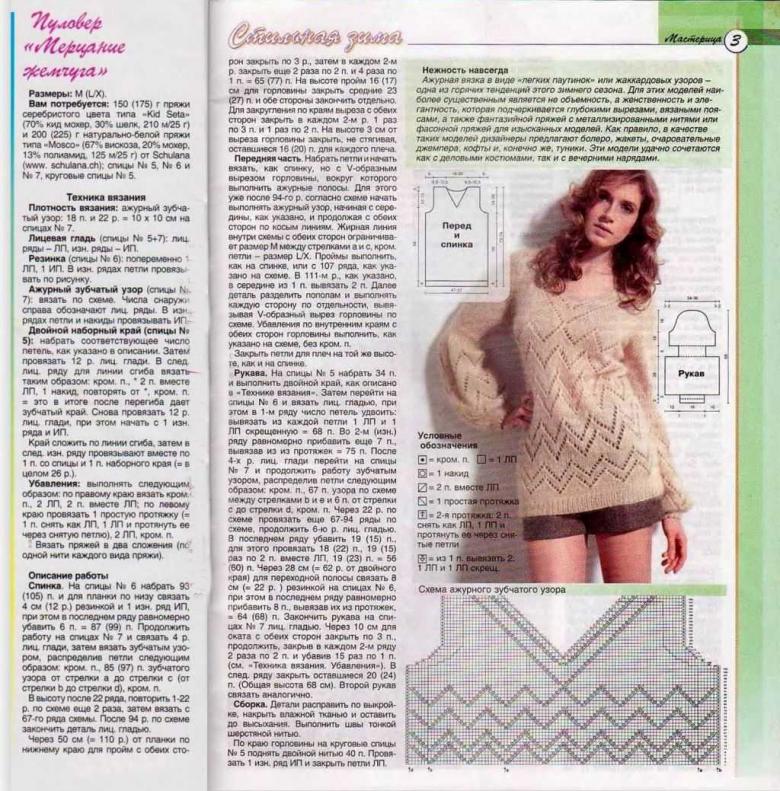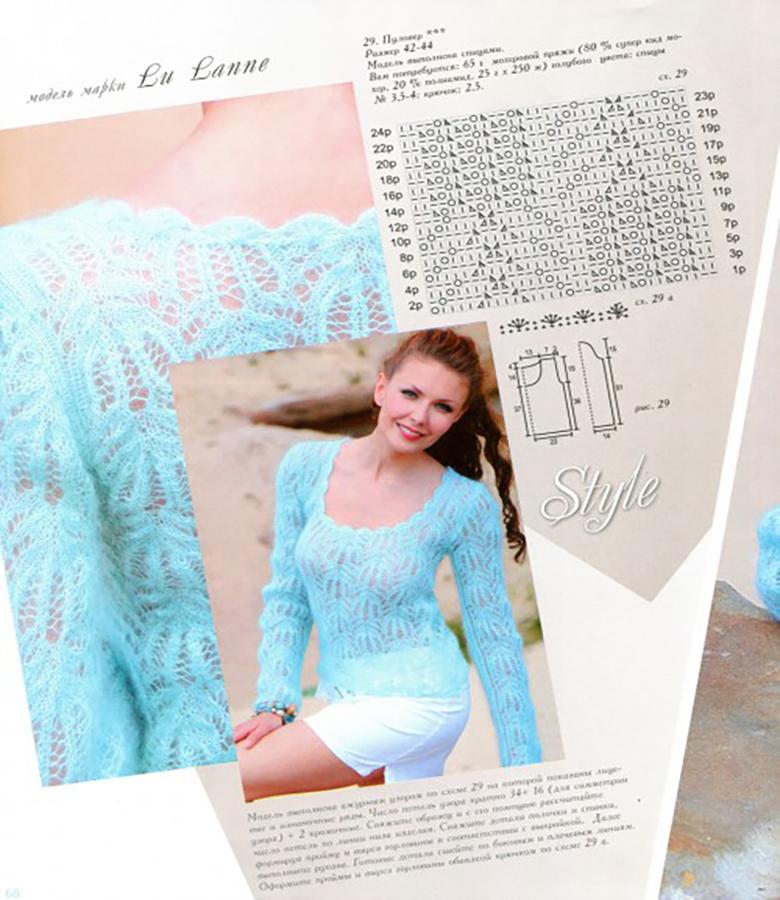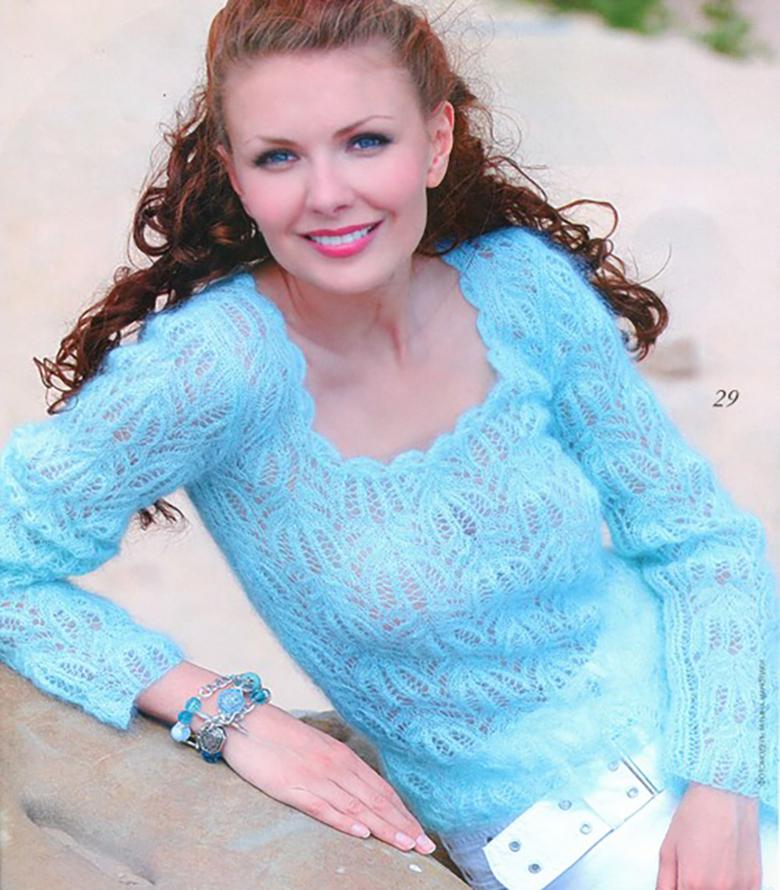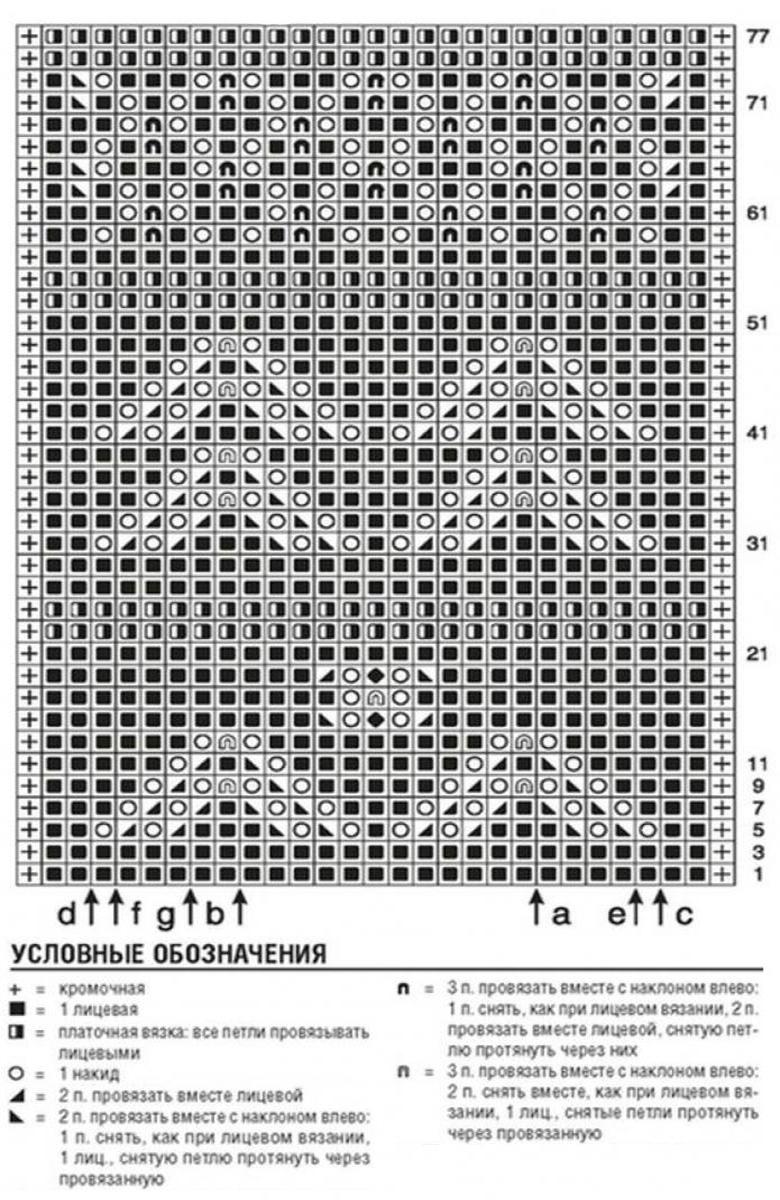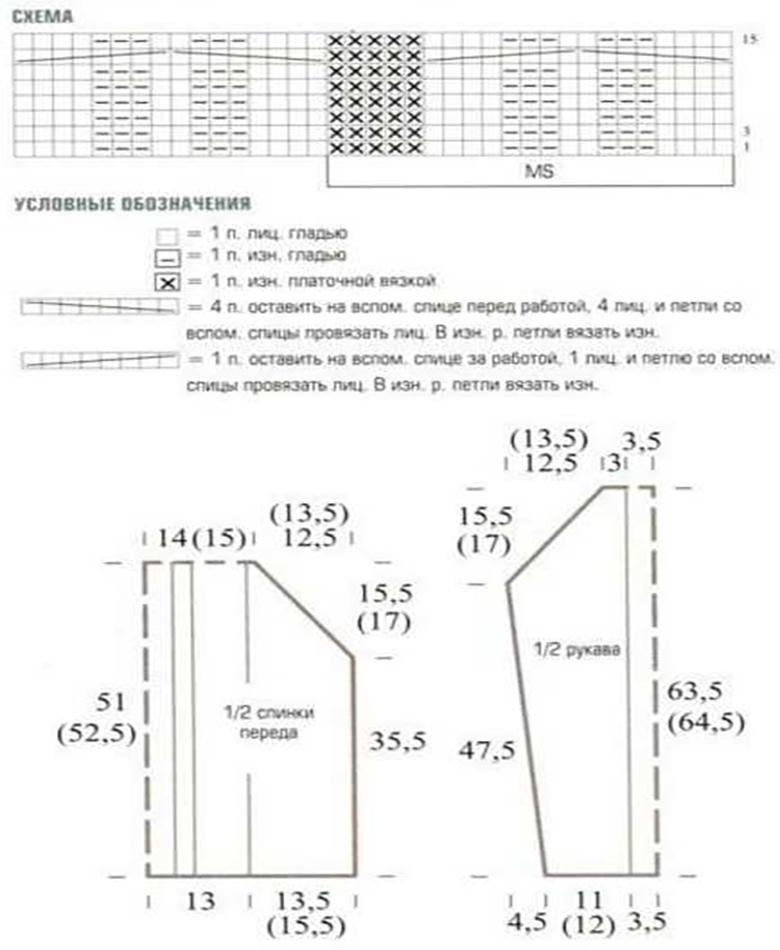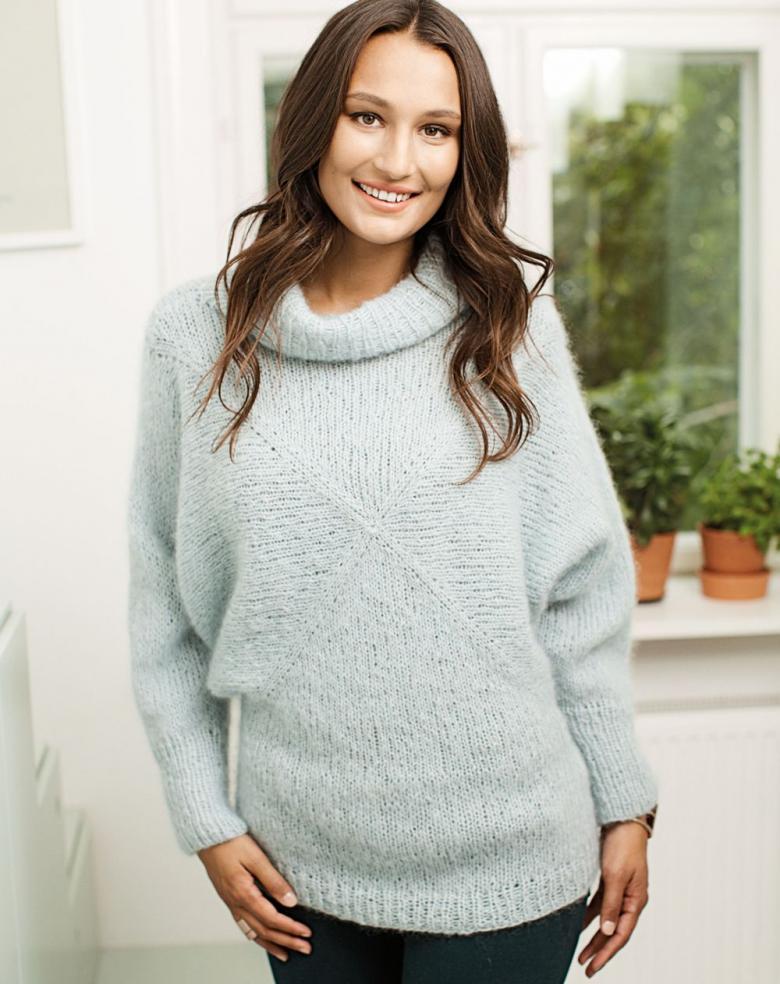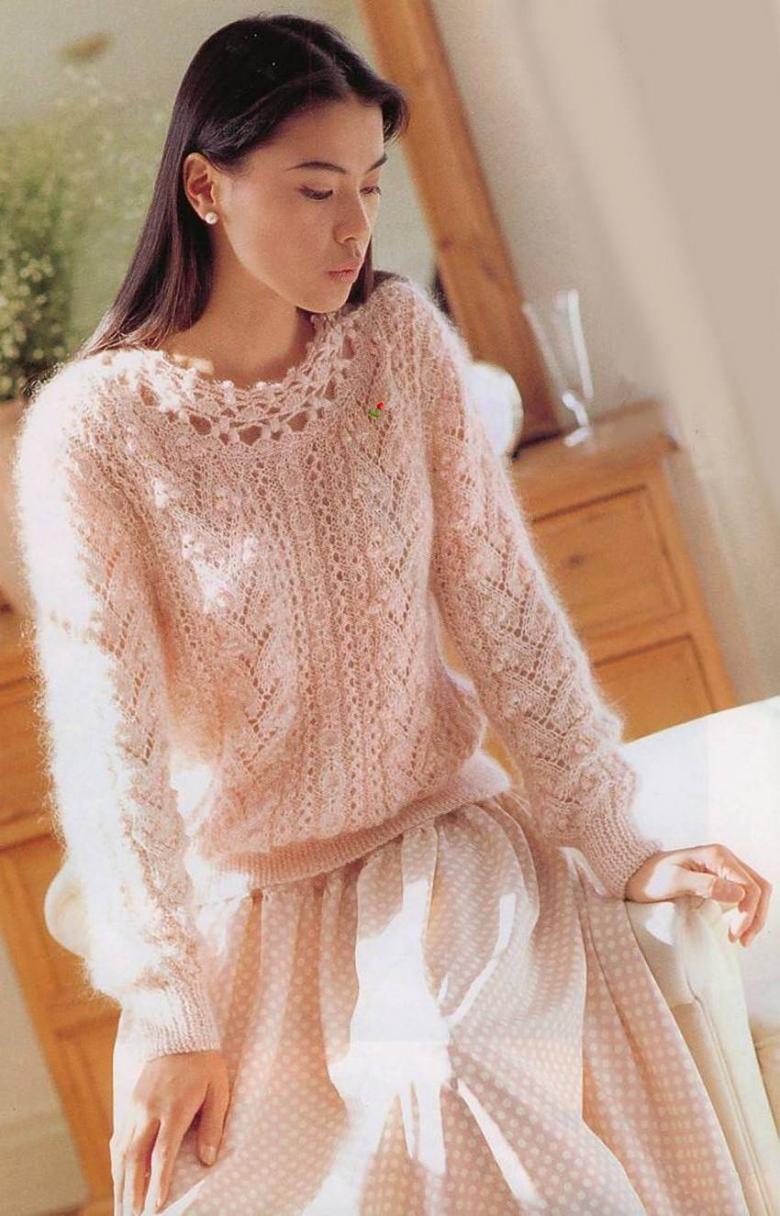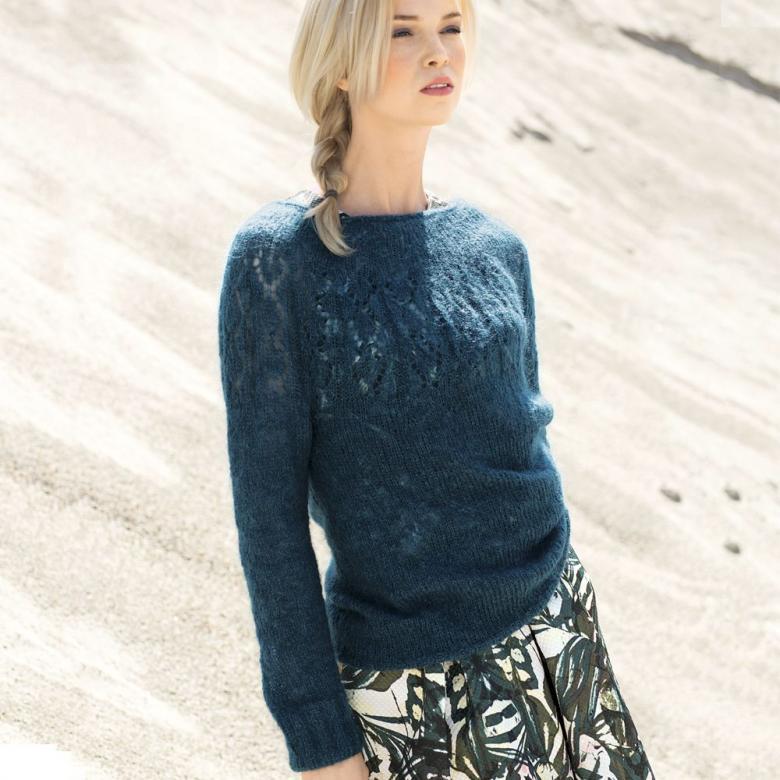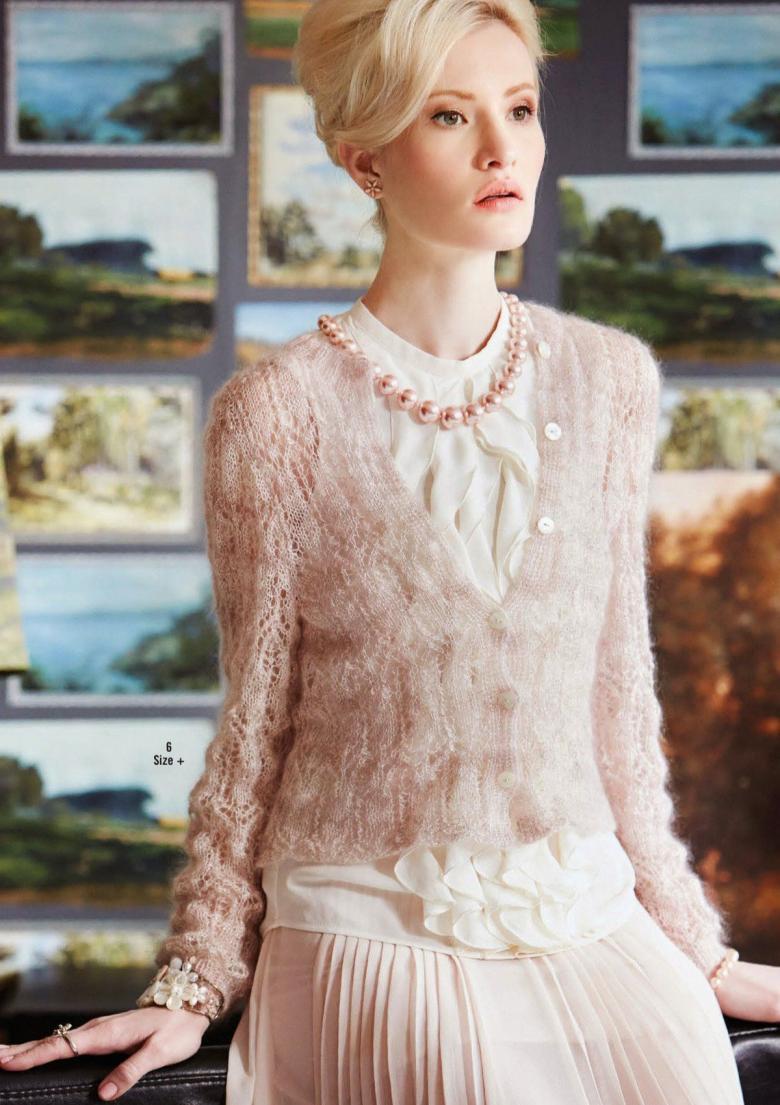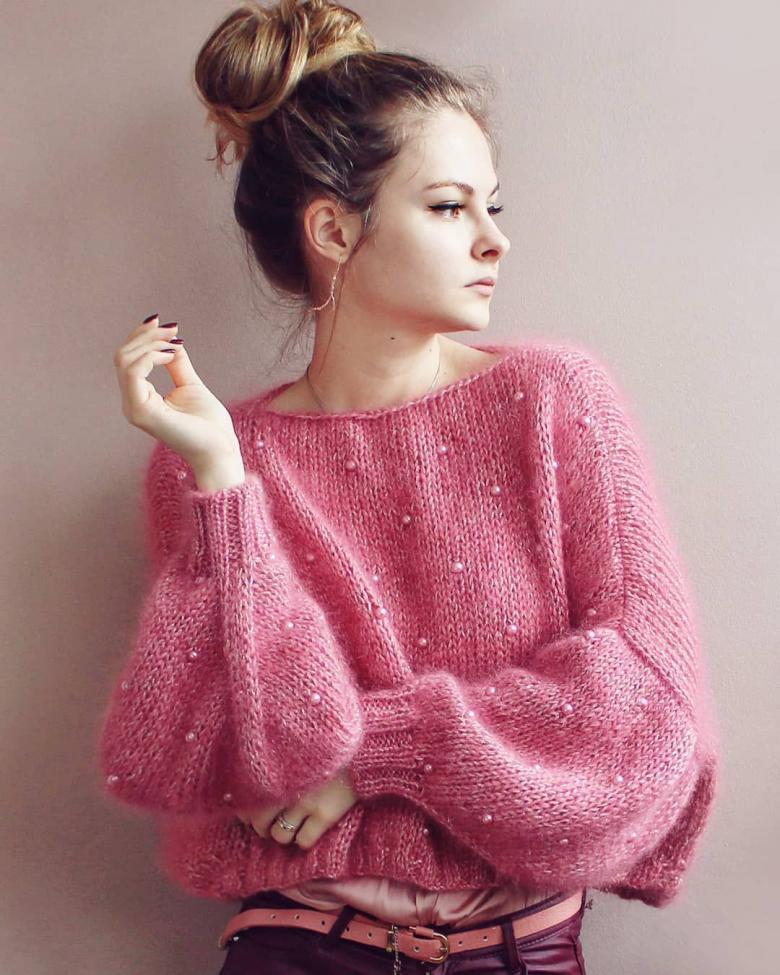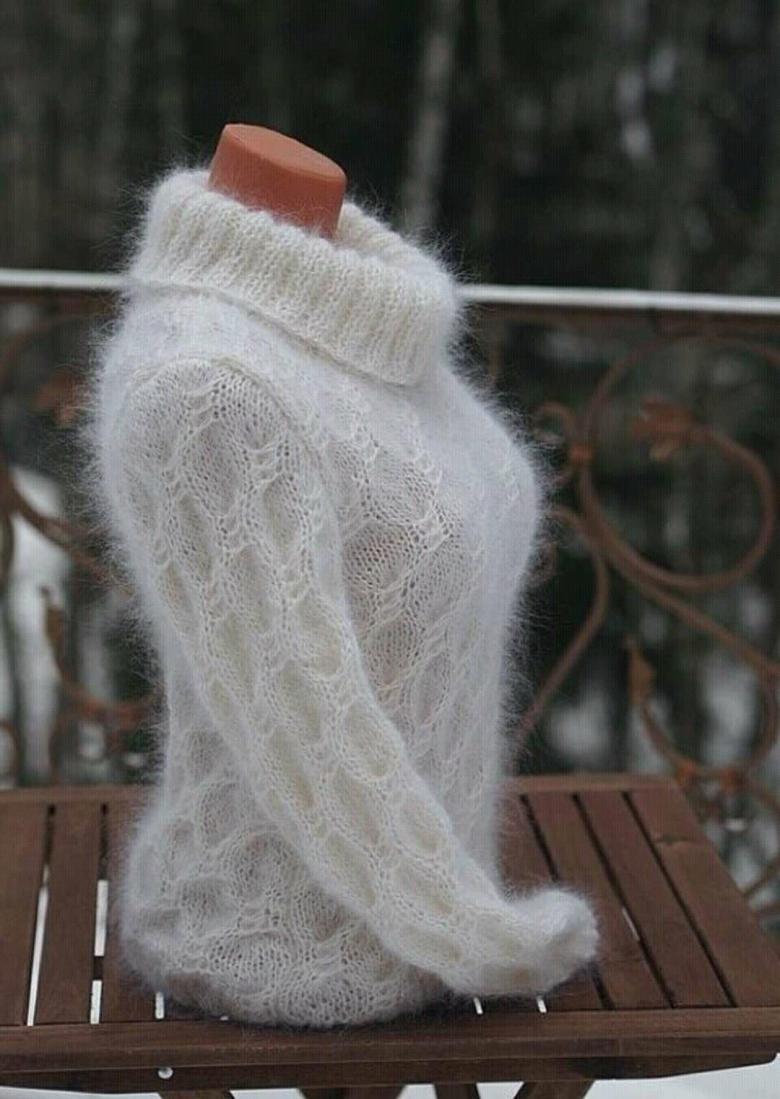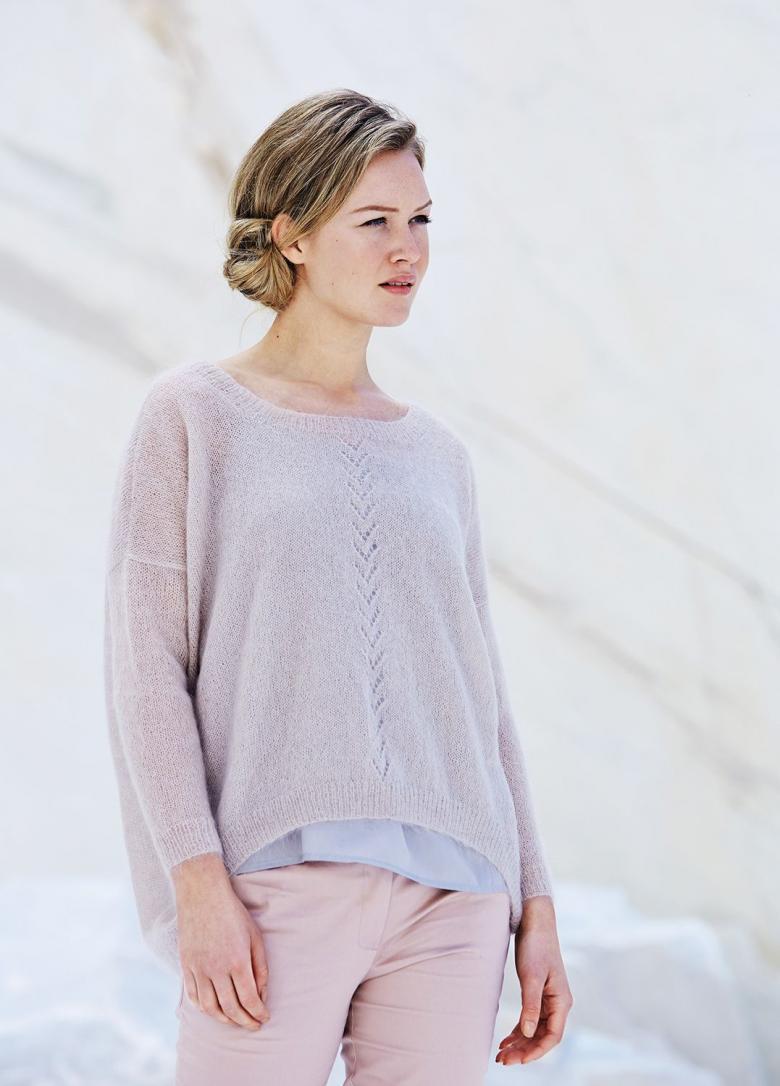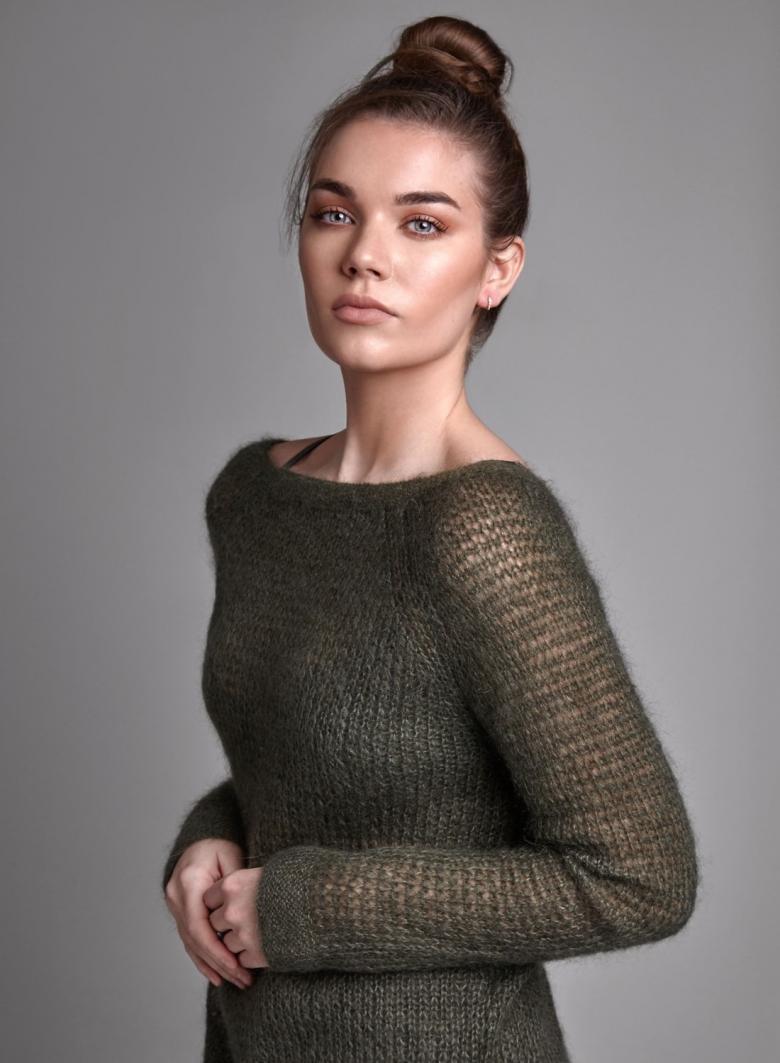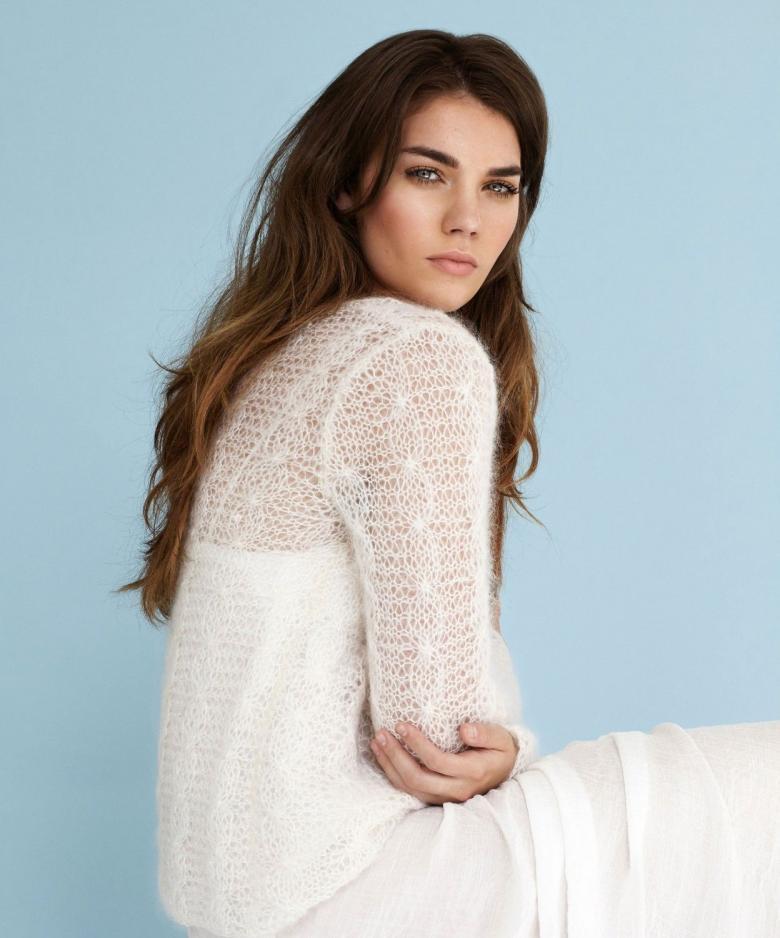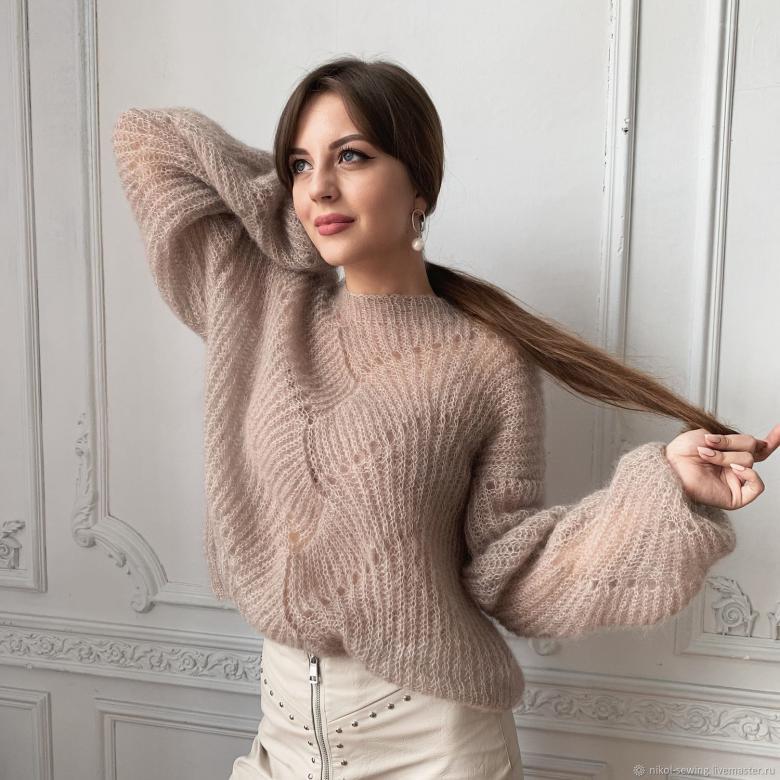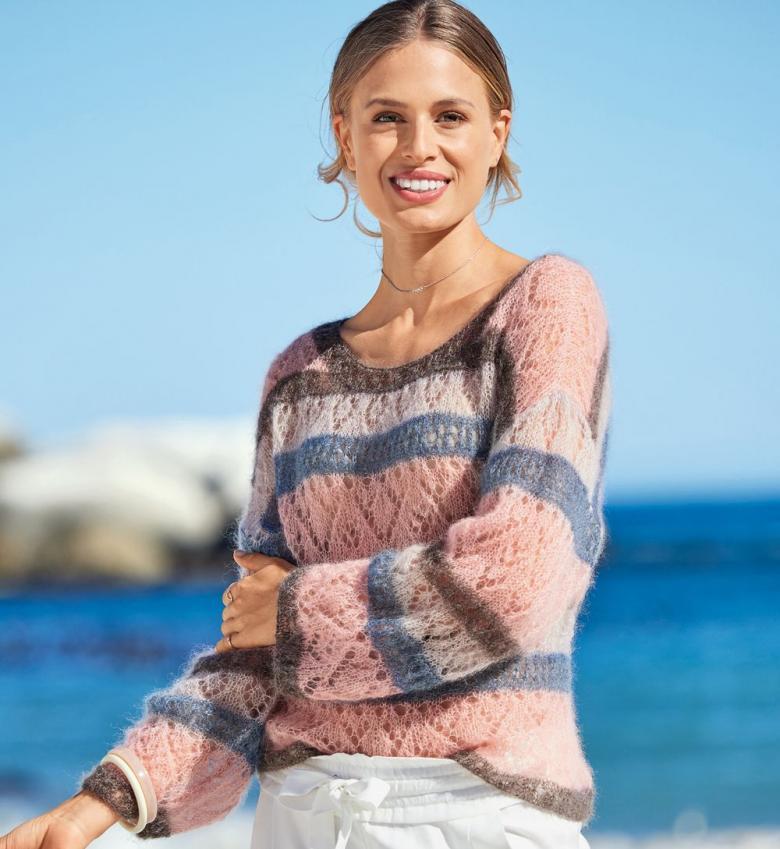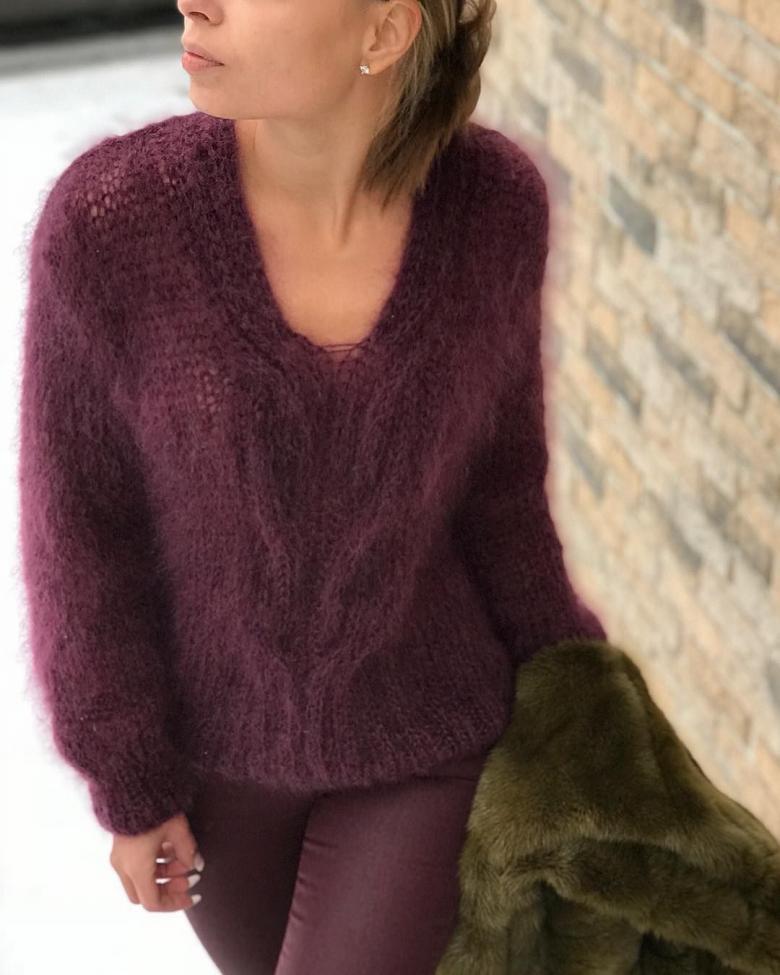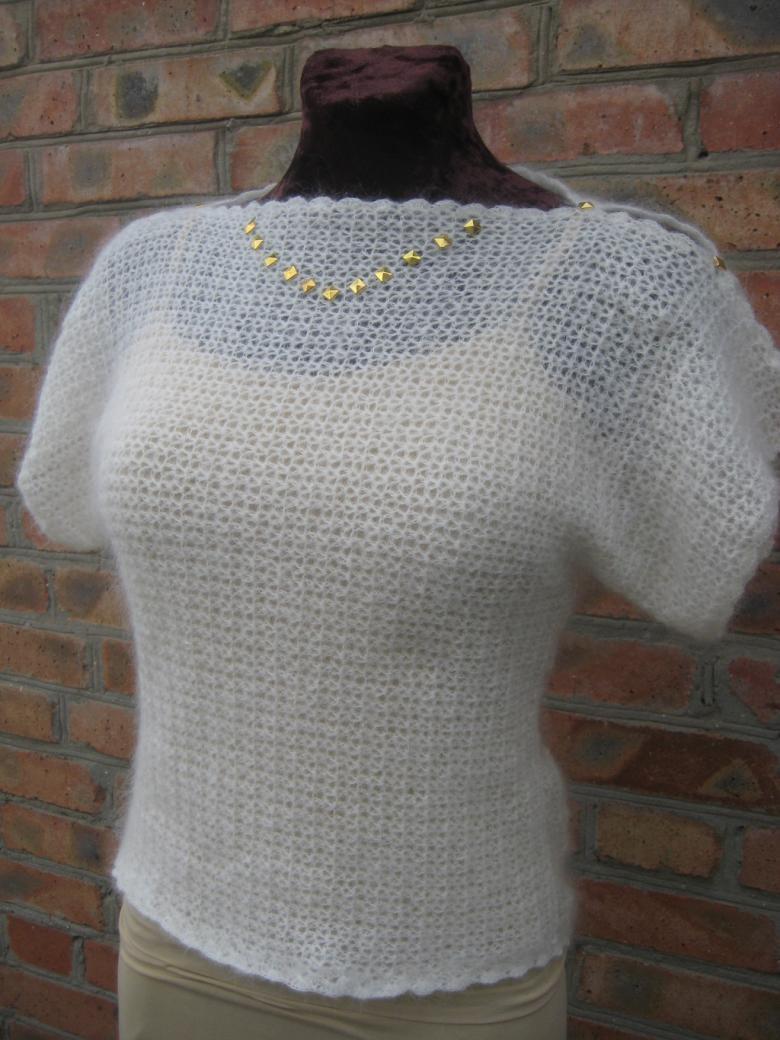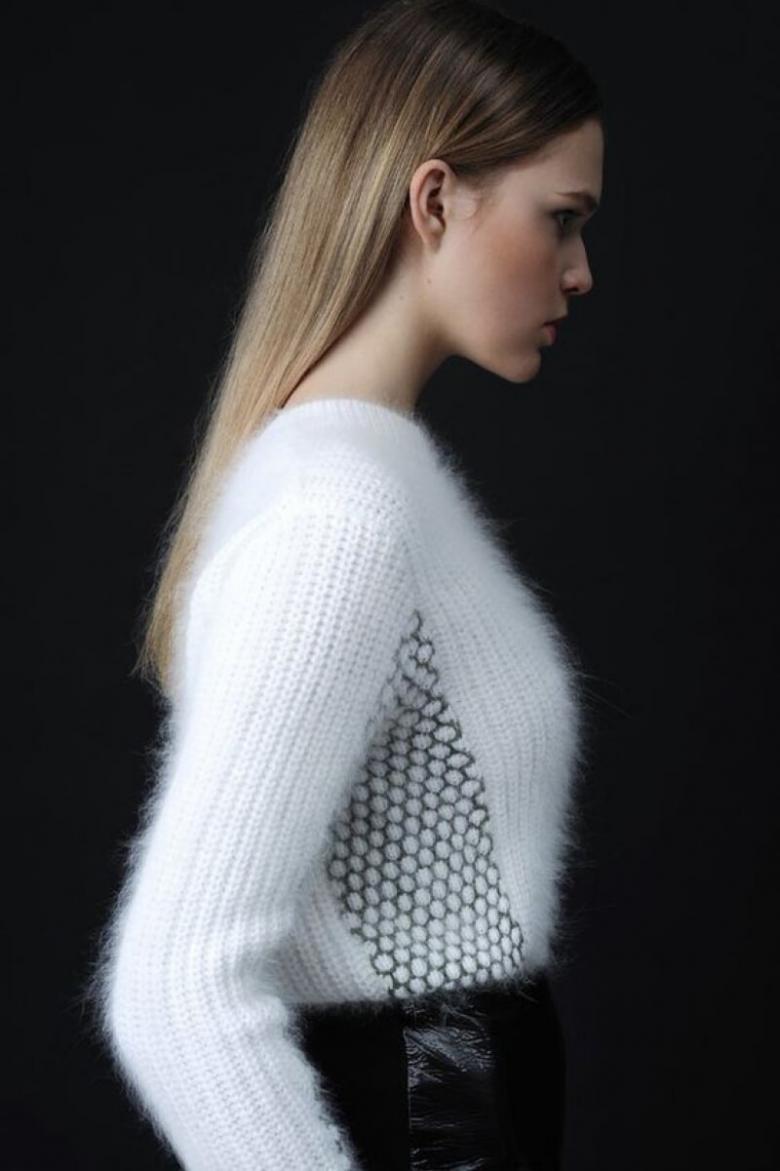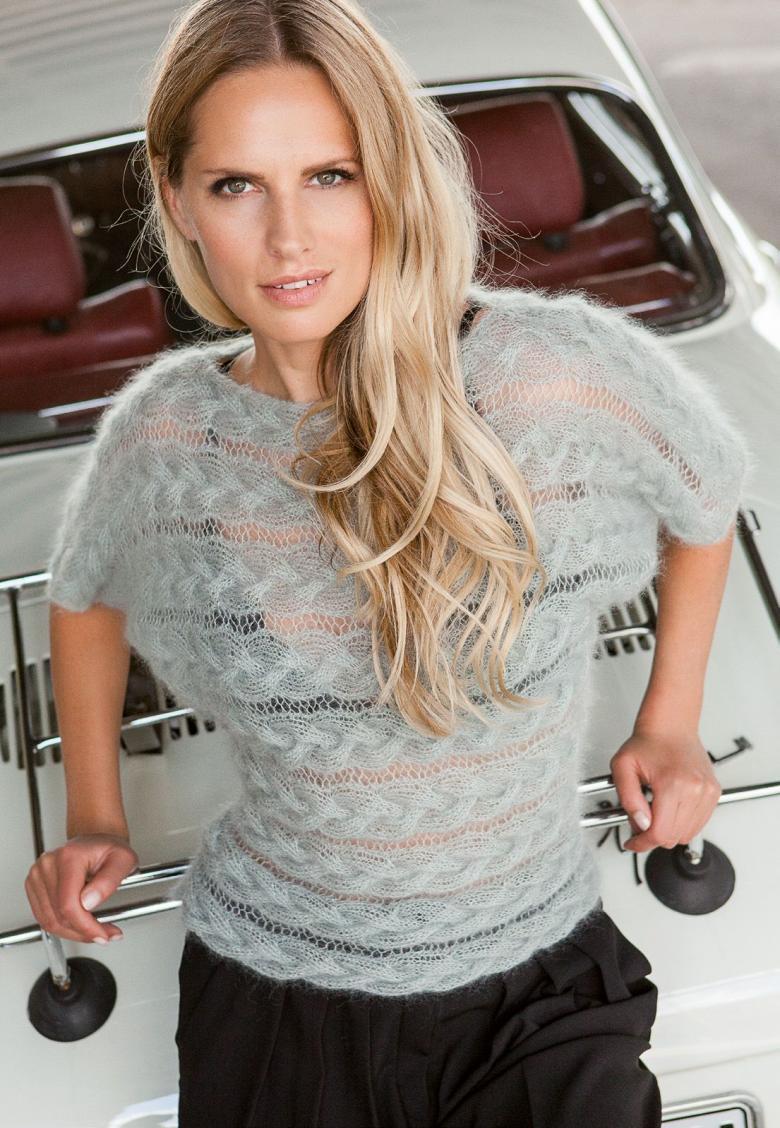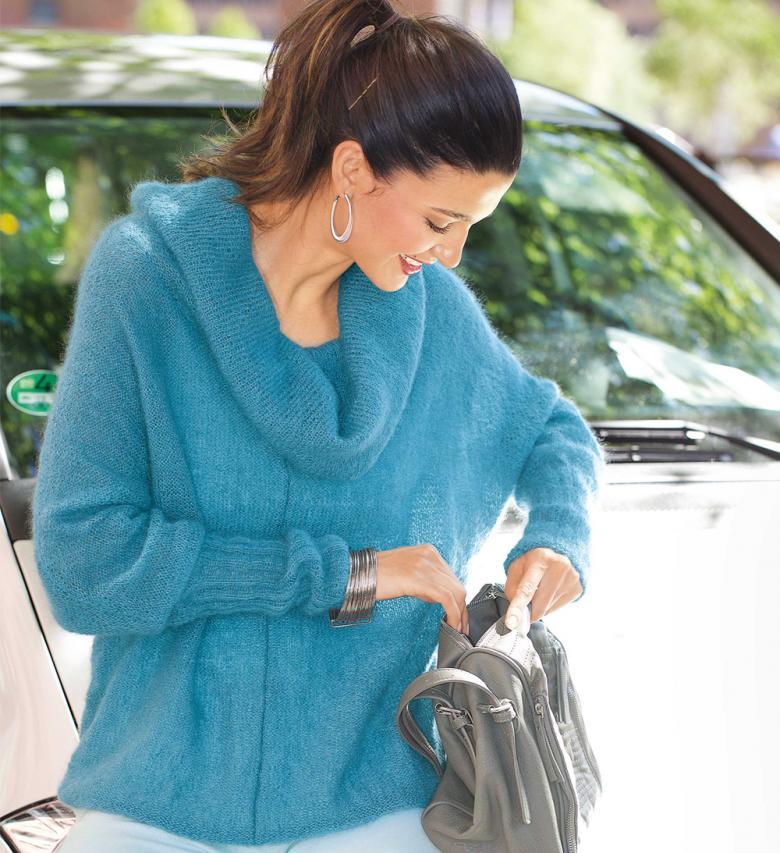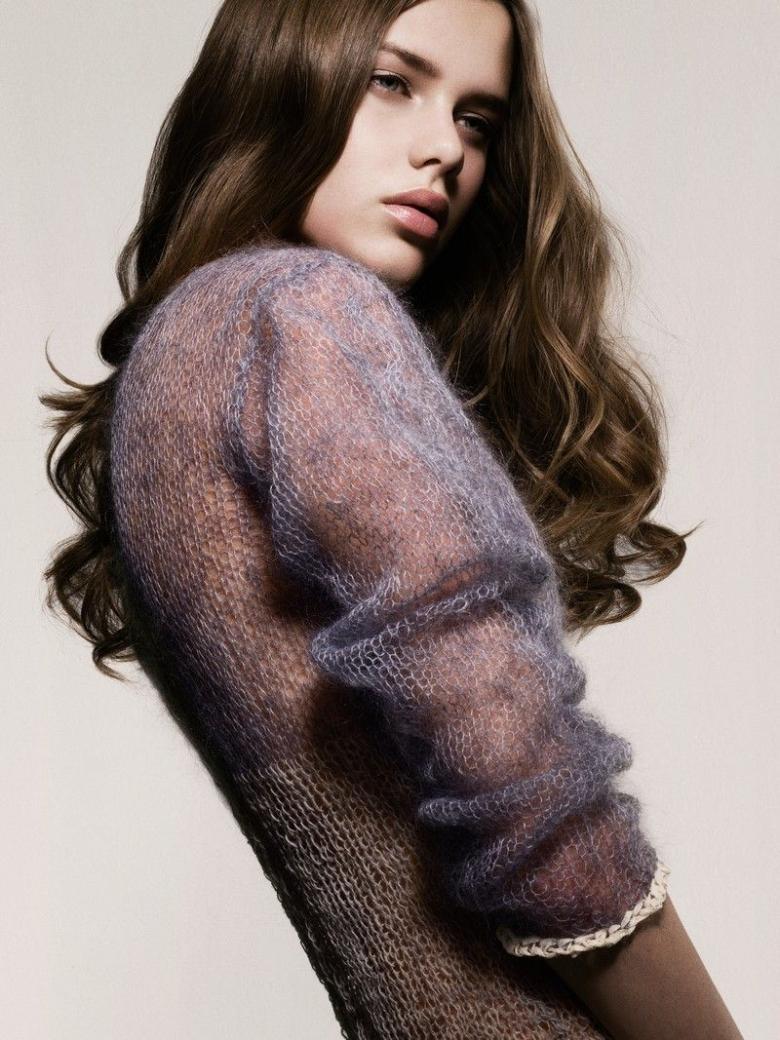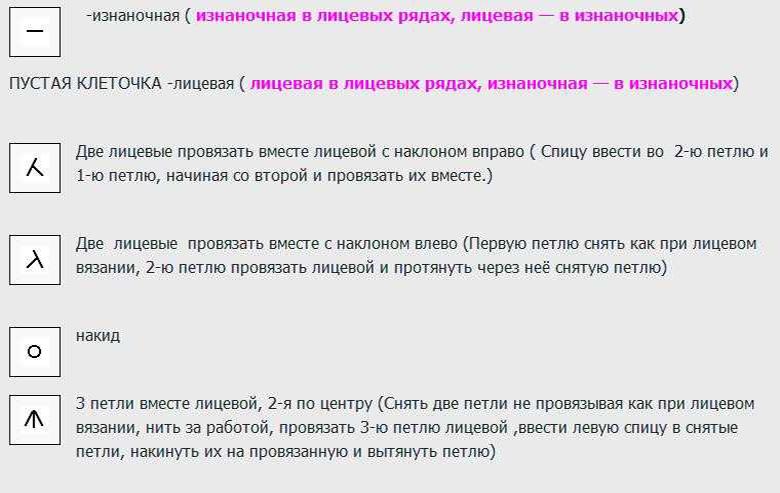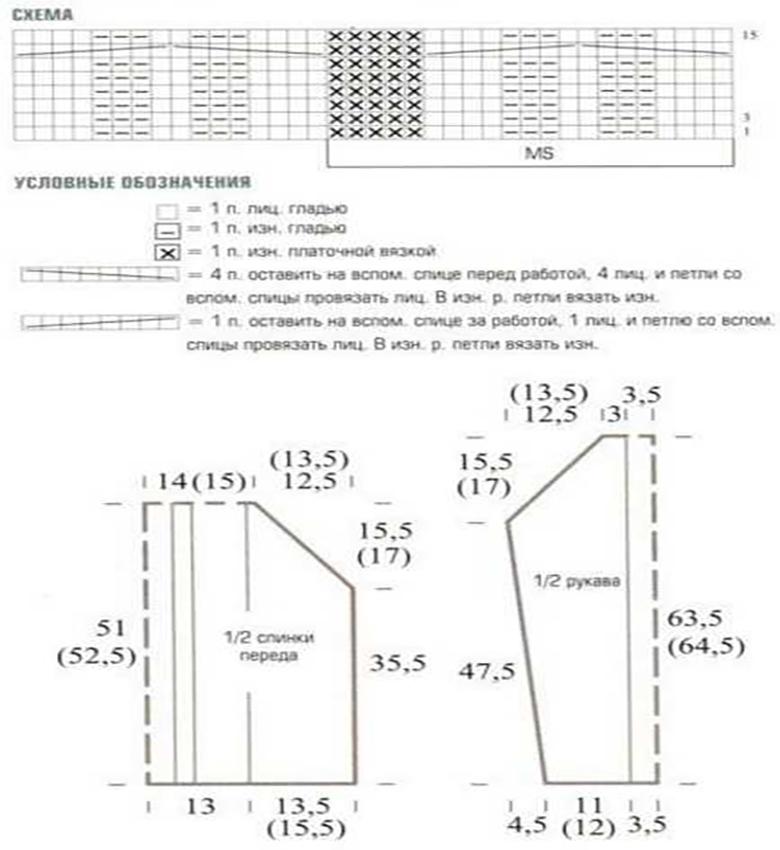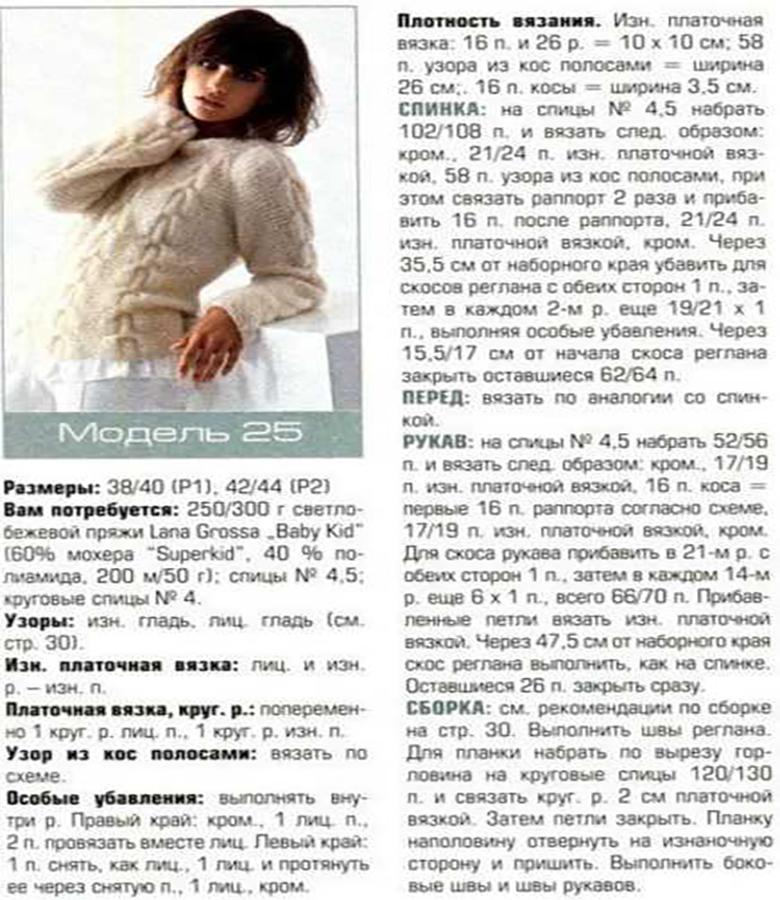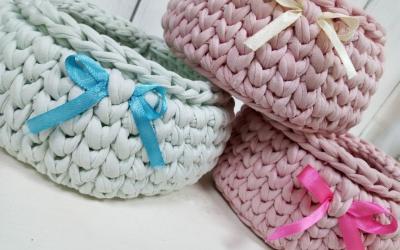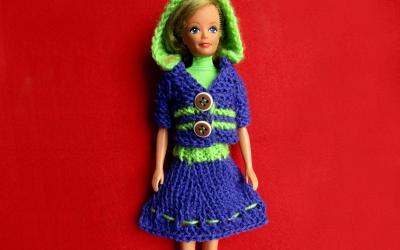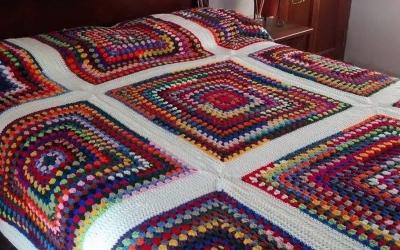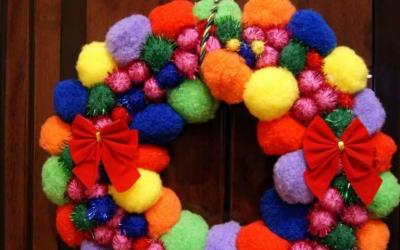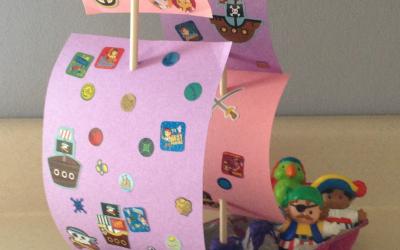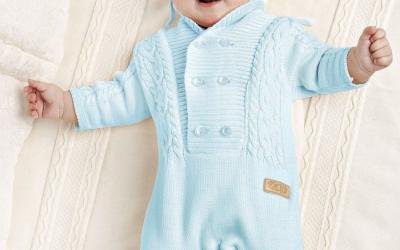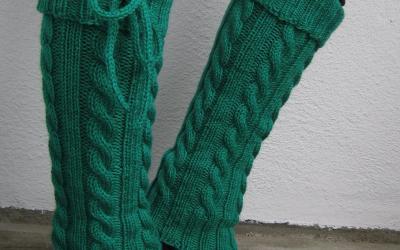Knitting with mohair: features of the yarn, requirements for its quality and an overview of simple schemes for work
Mohair is a yarn of very high quality and rightfully occupies one of the highest ranking types of yarns among needleworkers. Elastic with natural luster fibers of angora goat wool, reaching a length of a quarter of a meter, are used to produce mohair yarn.
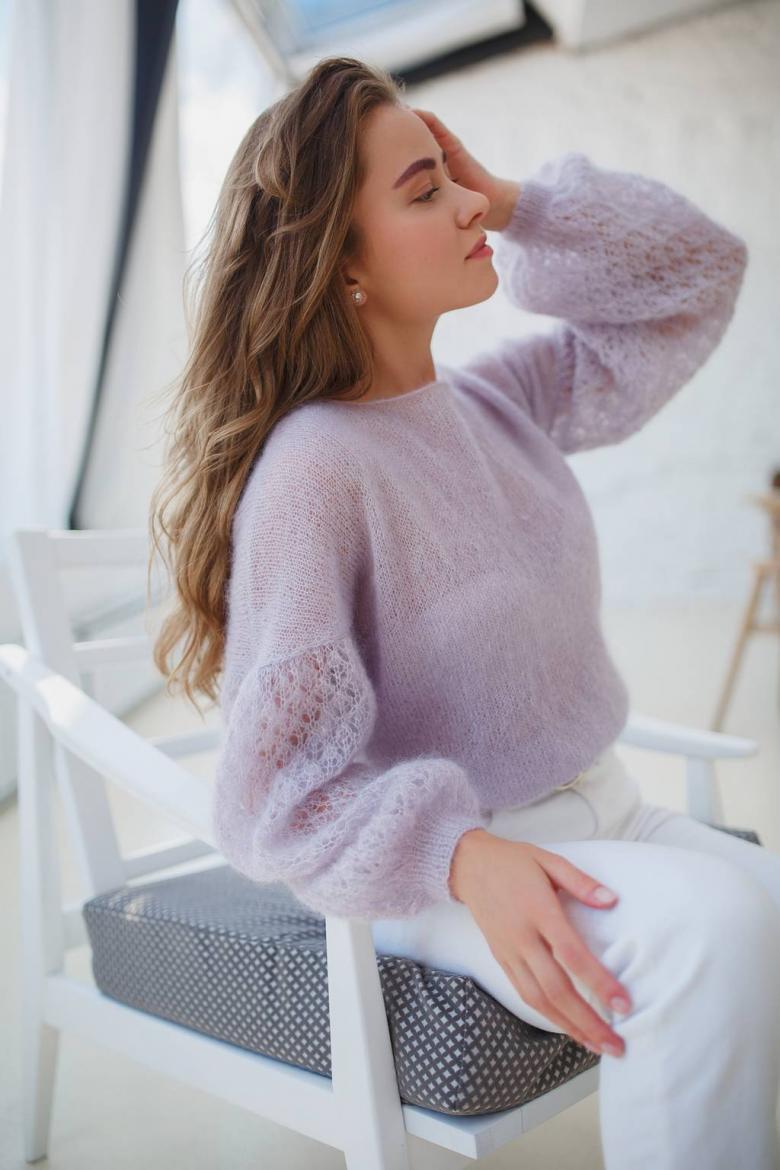
The great complexity of processing pure wool fibers greatly increases the cost of mohair. Even at a high cost, this expensive wool is very common, it is used to knit warm clothes: sweaters and blouses, dresses and original models of cardigans, shawls and scarves, hats and mittens. This lightweight, transparent material, which perfectly warms up in any weather.
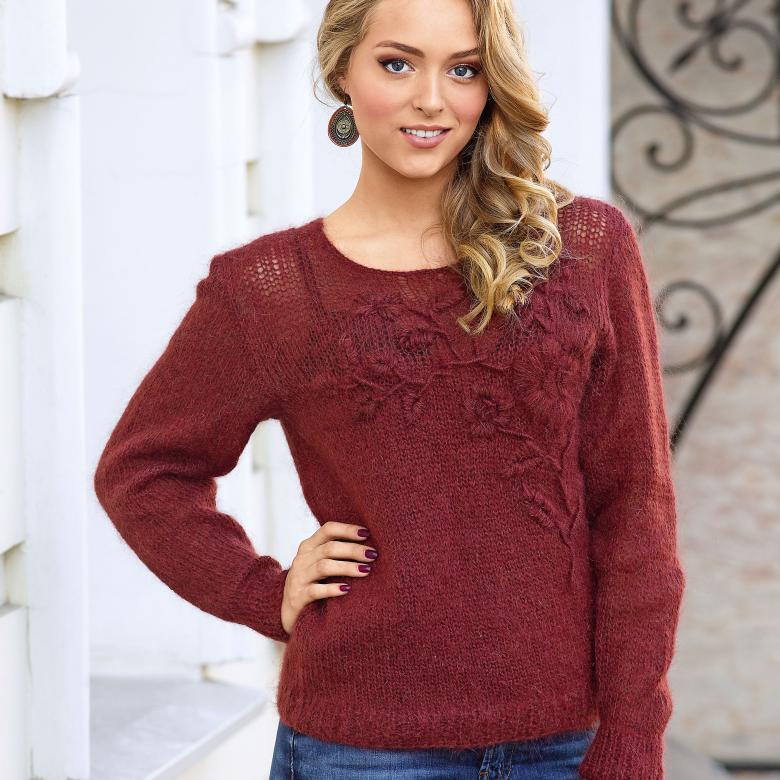
Types of mohair
Mohair differs in the degree of stiffness, which in turn depends on the quality of raw materials. Mohair is divided into Adult Mohair, Goating Mohair and Kid Mohair.
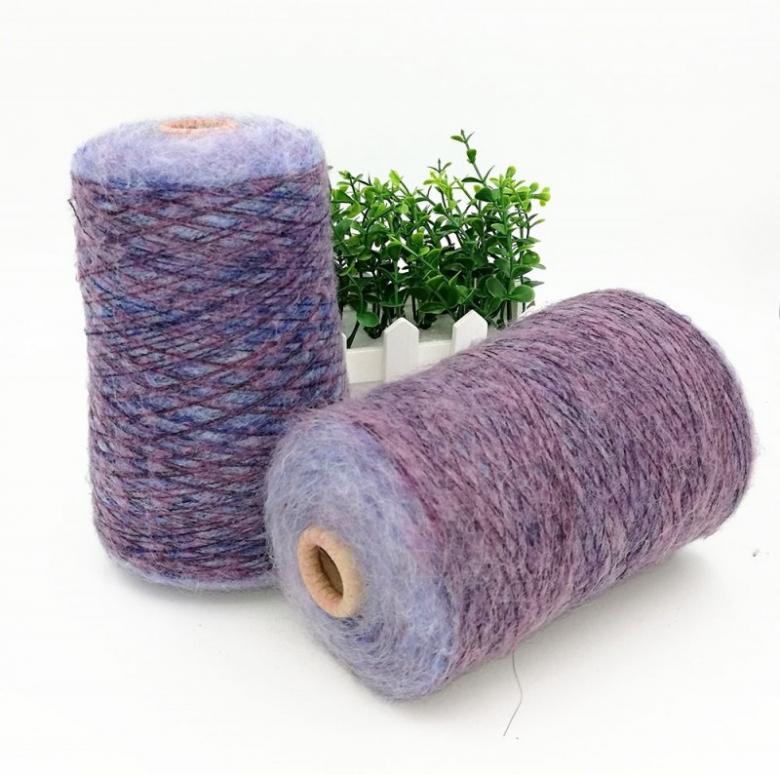
Adult Mohair is based on the wool of adult goats. It is used to knit items of outerwear and furnishings: capes, blankets and rugs, the products are dense, warm, but for people with sensitive skin, a little prickly.
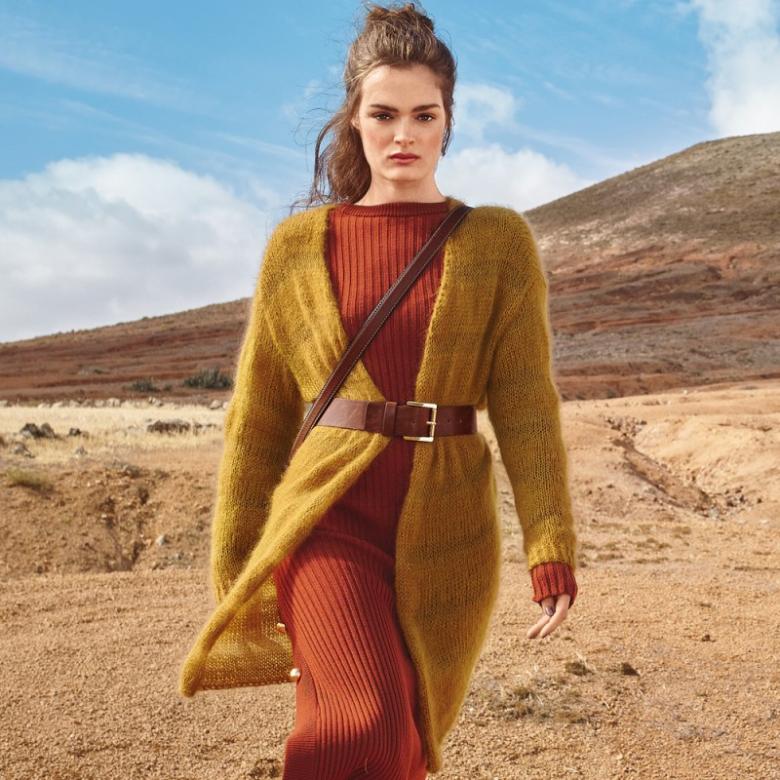
Wool of young animals is the basis for the production of Goating Mohair. It is used to knit lightweight warm clothing: transparent blouses, warm suits, soft sweaters, delicate dresses.

The most expensive is Kid Mohair, it is produced from the wool of the first shearing of goats. This yarn has a thickness comparable to silk, its second name is the King Mohair. Products made of this type of mohair are transparent, weightless, very delicate, mainly used to knit shawls, capes, blouses. The best kind of baby mohair is recognized Super Kid Mohair. It is obtained by combing out the fine undercoat of baby goats, and not by shearing wool.
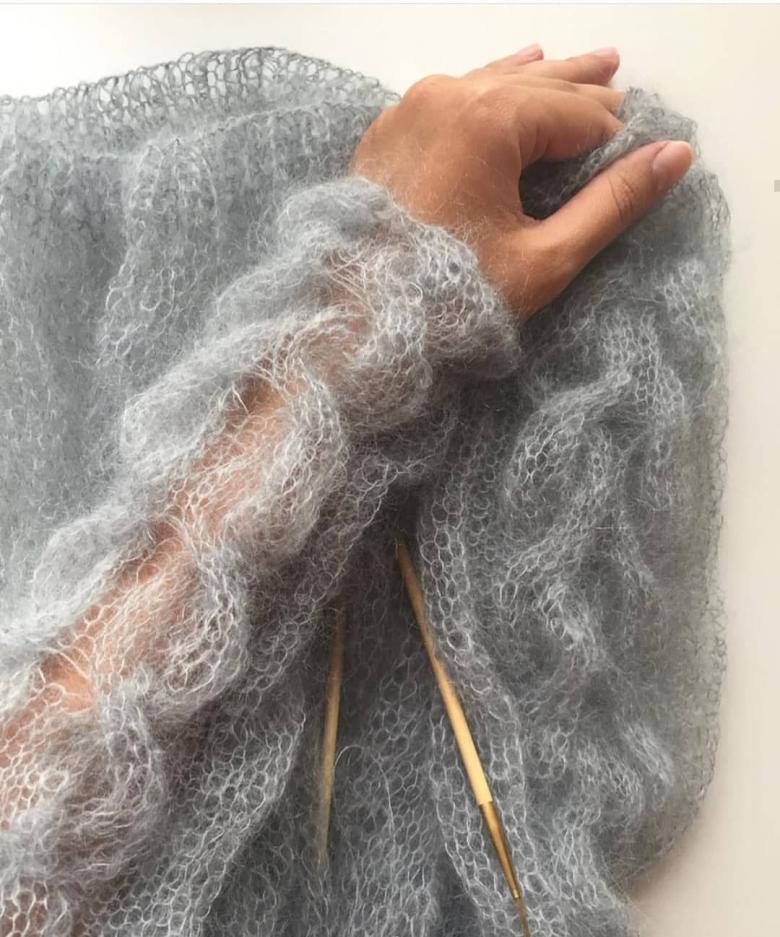
Products made from any kind of mohair are beautiful and effects, very comfortable and pleasant to use, and proper care for them allows for a long time to maintain the properties and aesthetics of mohair garments.
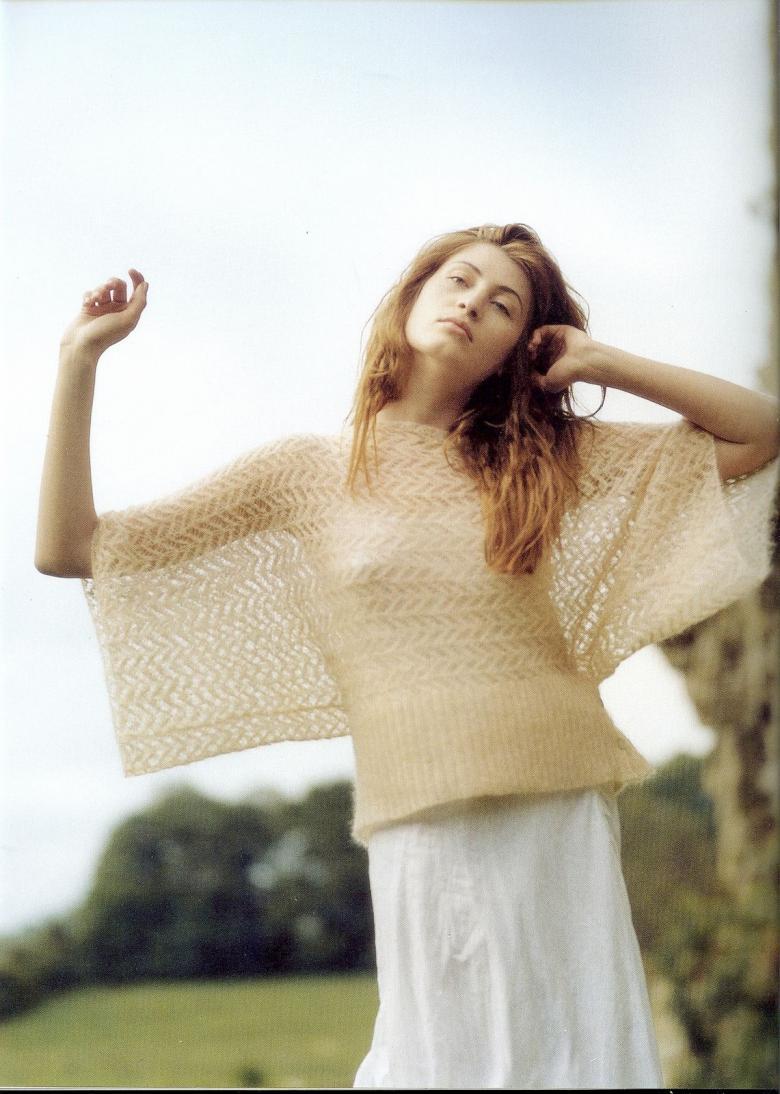
Features of mohair
Mohair favourably differs from other types of yarns by a large number of advantages, such as:
- hypoallergenic,
- hygroscopicity,
- resistance to contamination,
- beautiful appearance and unobtrusive natural shine,
- comfort,
- shape retention and drape properties,
- elasticity and strength,
- durability and longevity,
- easy to paint in any desired color and shade,
- good thermal insulation.
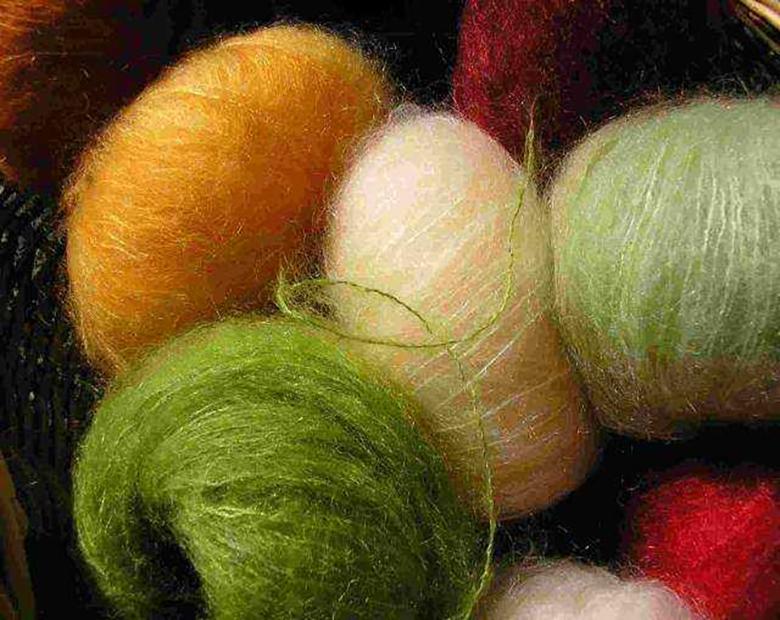
The main disadvantages are the high price of the yarn with a high degree of risk of buying a fake and the need for delicate care.

Quality requirements for the yarn
Mohair in some parameters is the same as silk yarn. Wool hair of Angora goats, very smooth and slippery, so it is always added impurities. On the quality and quantity of these additives and depends on the quality of mohair yarn.
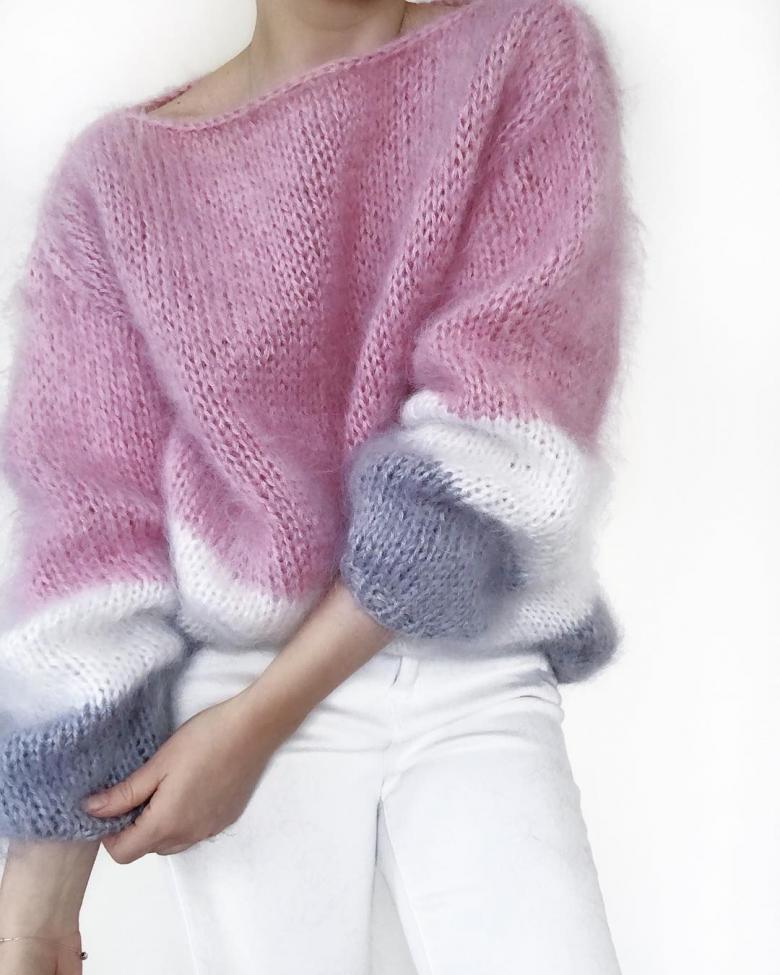
Mohair material of the highest grade is considered yarn containing natural admixtures (silk, merino wool) in the amount not more than 20-25%, but with a higher content of natural admixtures (sheep wool, cotton) yarn quality remains at a high level.
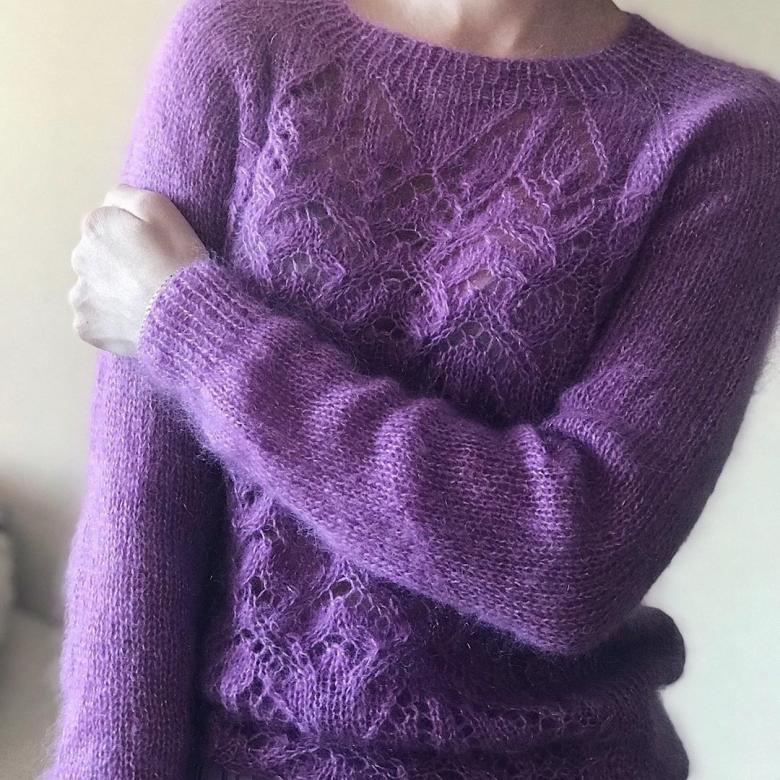
Adding acrylic or polyamide fibers to mohair yarn allows manufacturers to significantly reduce the cost of the finished product, but the quality of mohair is also reduced. Modern synthetic has good characteristics, but it changes its appearance after washing, on the surface of the product are formed lint, so it is desirable to look for natural materials, which look better and last longer.
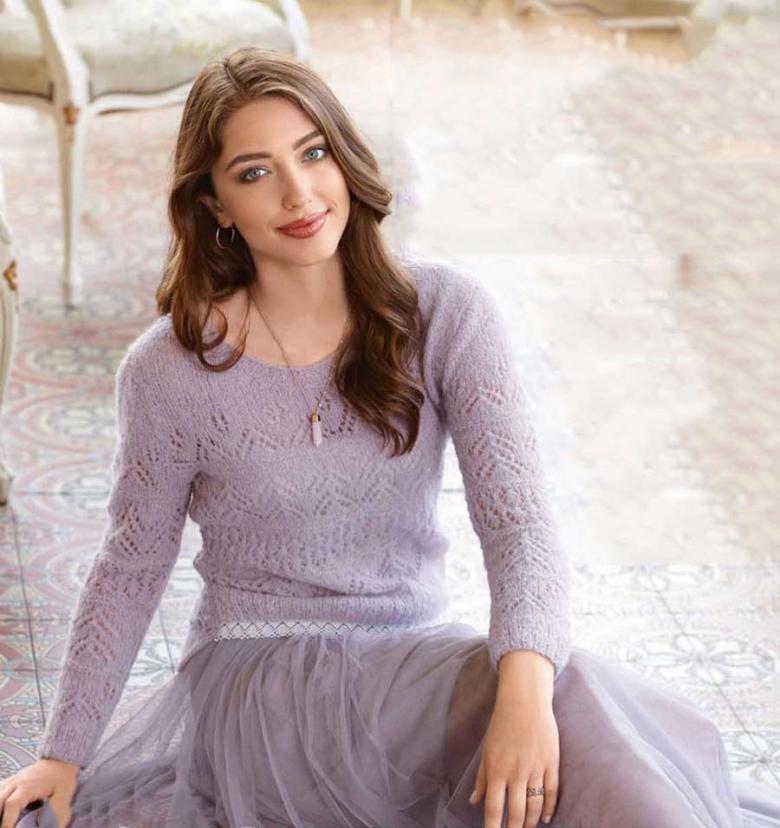
Very often mohair is confused with angora, believing that the wool got its name from its owner - the angora goat. Experienced needlewomen know that angora is another woolen yarn. The fundamental difference between these two woolen yarns (mohair and angora wool) is that mohair yarn is made from hair, and real angora - from down.
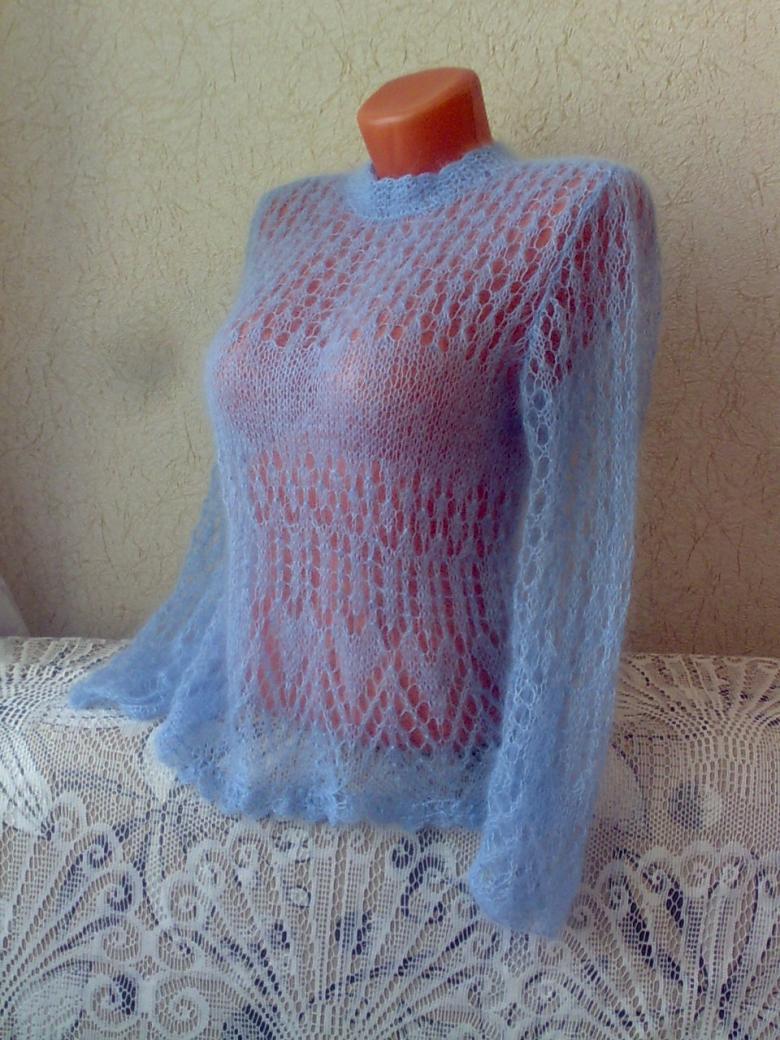
The specifics of knitting with mohair
When knitting from mohair, many people give preference to needles. The hook makes the fabric too dense, it does not seem as airy and fluffy as when knitting with needles, and the fork is more suitable for experienced knitters.
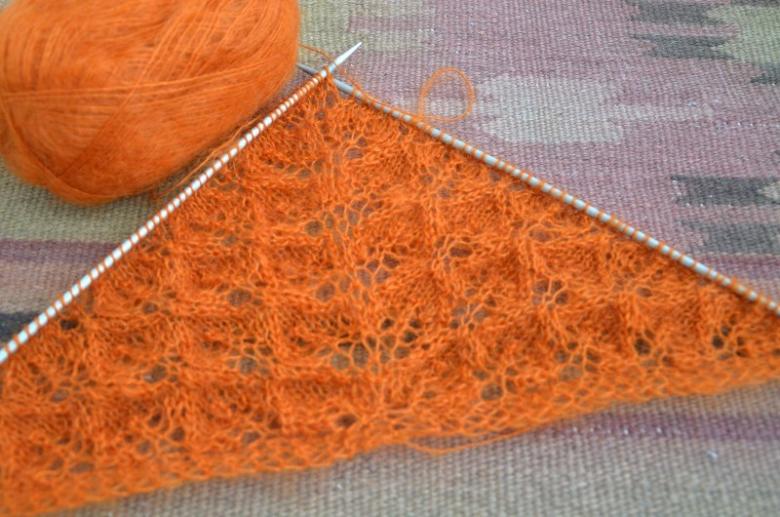
There are nuances in knitting with mohair:
- The density of the knitting throughout the entire area of the fabric must be clearly regulated, and the yarn must be well stretched when knitting;
- Mohair looks best when knitted with loose knit needles;
- To work with mohair, it is better to use a larger needle size than is required for the selected thickness of the yarn.
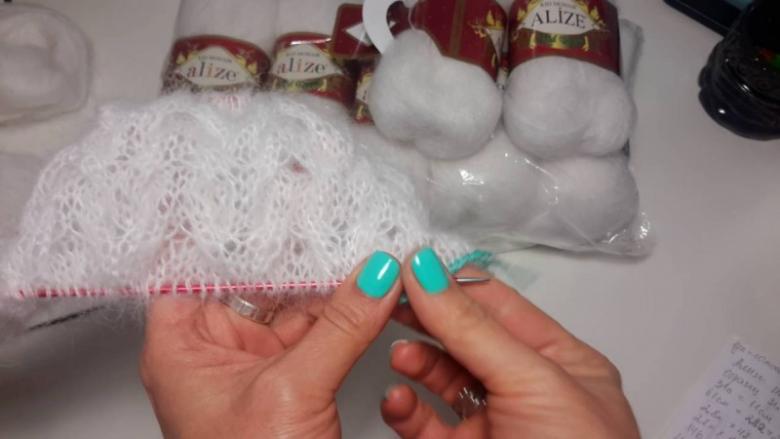
If you follow these rules, the finished product will be more airy and delicate, but it will not affect the warmth of the model.
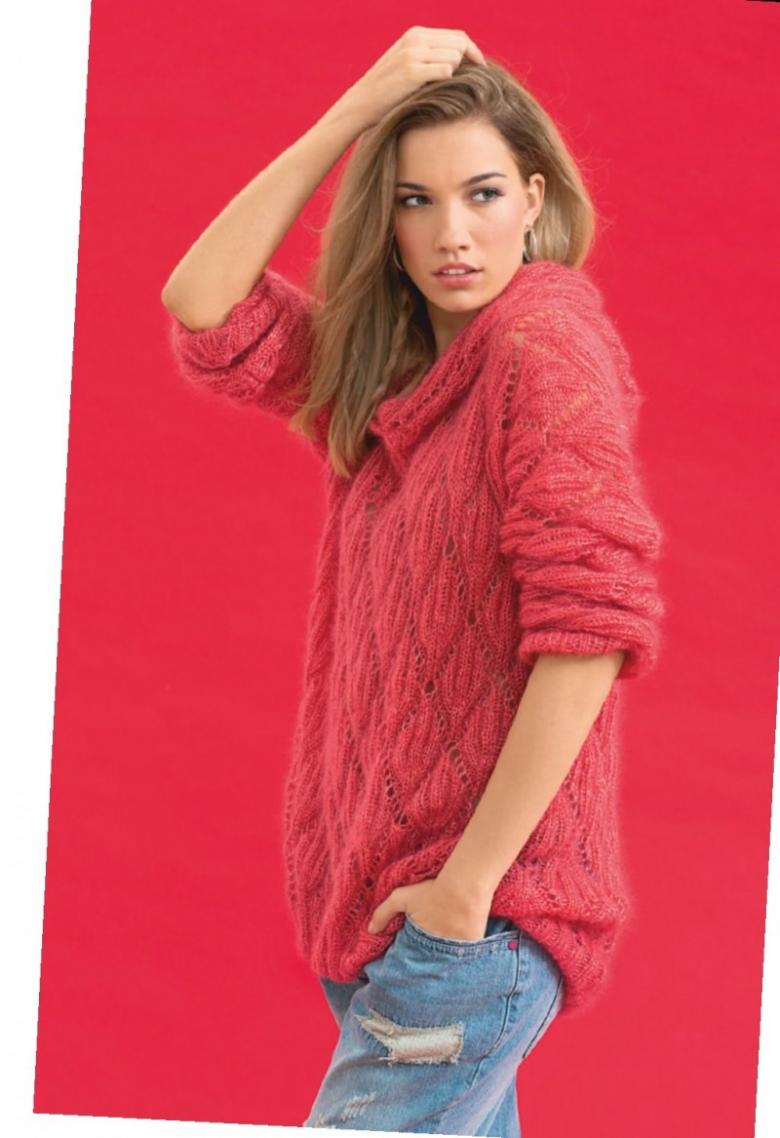
Knitting with mohair in knitting needles
Mohair scarf by knitting needles
For beginners who have never dealt with mohair, it is recommended to start acquaintance with the yarn, with knitting a mohair scarf by needles. The model should be made in the most ordinary version - in the form of a long rectangle in a simple pattern. This can be: stocking glaze, shawl glaze, English ring, a simple openwork.

The width of the finished product should choose 40 cm (too narrow a scarf will not give the yarn "reveal"), the length of the scarf depends on the selected style.
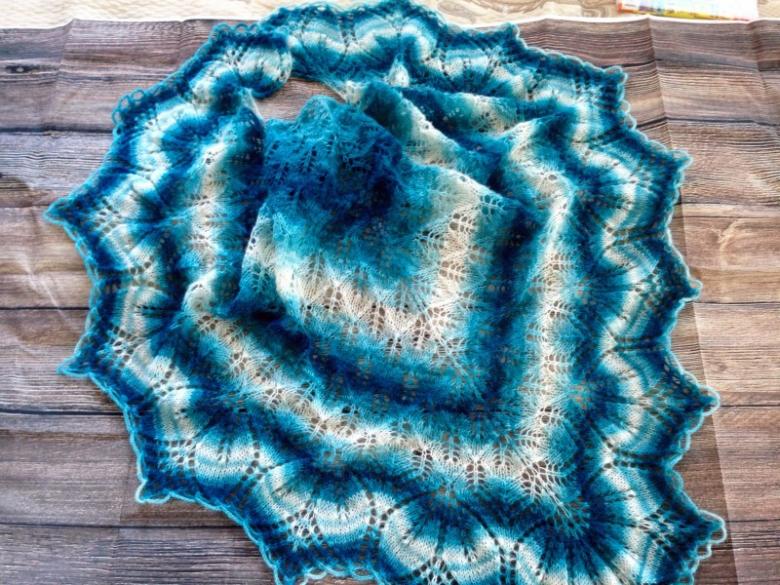
Women's mohair hats
For knitting hats, mohair yarn is too thin, so it is better to knit in twin yarns, and if you want to get a very warm model, you can knit in three or four yarns.
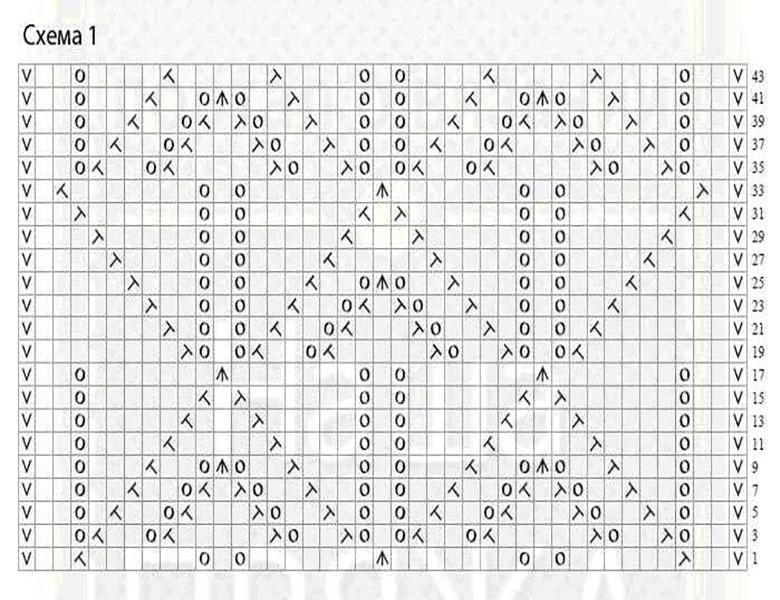
Too dense knitting is not suitable for mohair, the fluffy fibers of its threads tangle when knitting tightly, and when unknitting the finished fabric, the fibers will collapse. When knitting mohair hats, it is better to give preference to simple patterns - front or shawl ironing, as well as any kind of rubber bands.

Knitting a mohair hat with knitting needles is not difficult. The label of any yarn indicates the number of needles that are suitable for work, but experienced craftswomen recommend beginners to choose the size of the needles on the label. Knitting with mohair is very fast, a fashionable hat will be knitted in a day, if you choose a simple pattern and correctly calculate the number of loops.
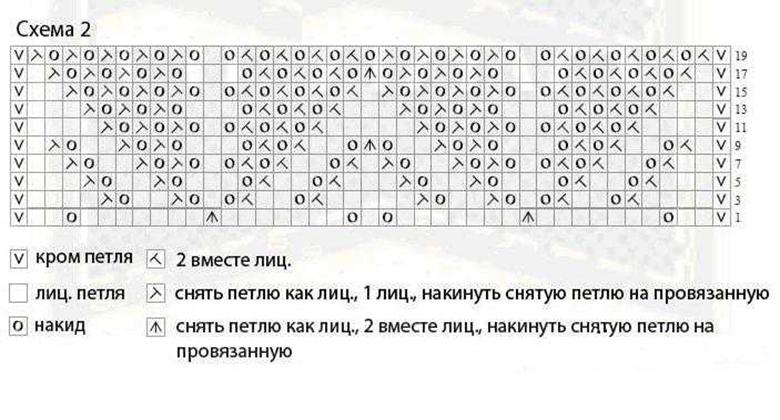
Mohair models for women
Mohair models are divided into two types - knitted from thin mohair or mohair of normal thickness.

To create a romantic image women just need to have a couple of models knitted from mohair in their closet. Transparent and airy detail of the closet allows you to create a delicate summer image. For summer models usually uses a yarn of the Kid Mohair or Super Kid Mohair type. In addition to airy shawls and stoles from a baby mohair you can knit openwork blouses, dresses for evening walks and other beautiful things.
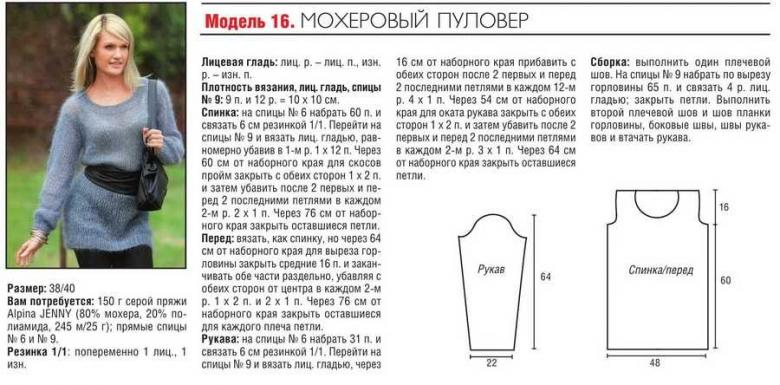
Adult Mohair will help to create an original model of a seasonal coat or cardigan for the office, which will add exclusivity to business style. Any model of Goating Mohair will give warmth and comfort to its owner.
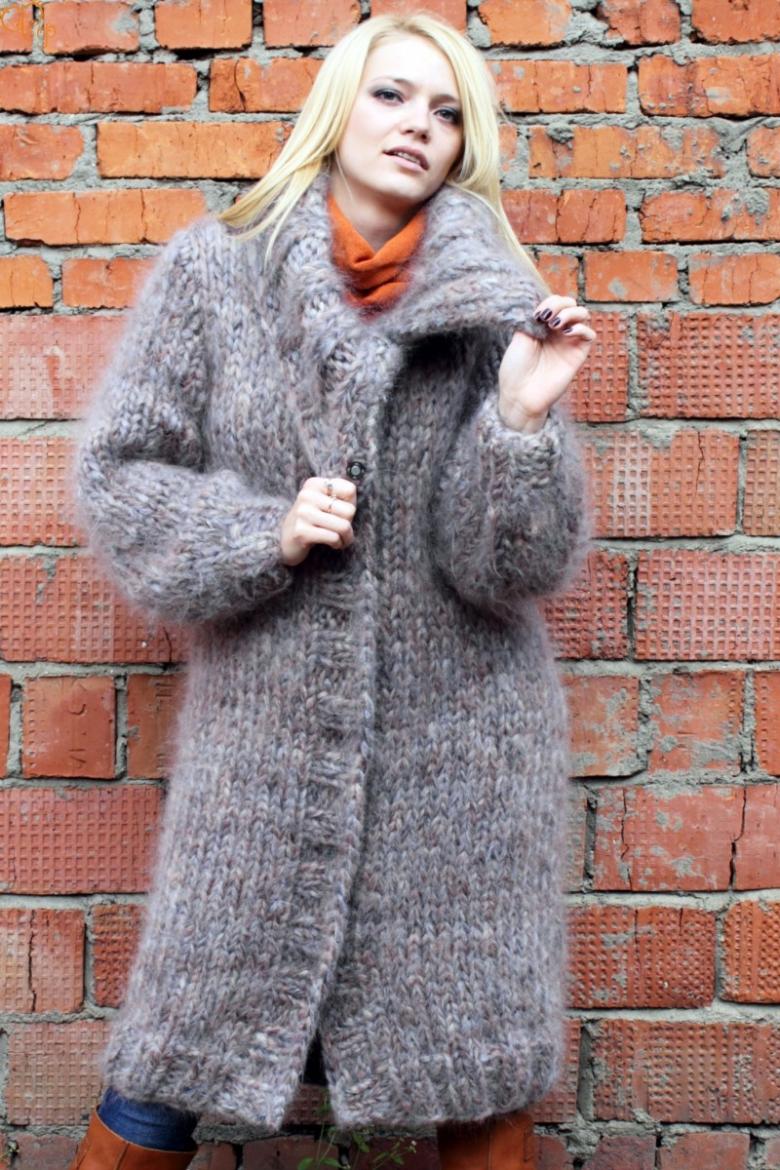
Mohair care
Just like any other wool, mohair needs special care. In order not to spoil the product of this delicate yarn and to maintain its original appearance for a long time, it is necessary to strictly follow the rules:
- apply automatic washing of the appropriate mode ("wool" or "hand wash");
- when washing manually with water at room temperature, apply only light pressure on the garment, without wringing and twisting;
- only use washing detergents for wool products;
- dry flat on a cotton cloth placed on a flat surface;
- use steam ironing, not a regular iron;
- store folded or on a shoulder rack using a moth-proofing agent.
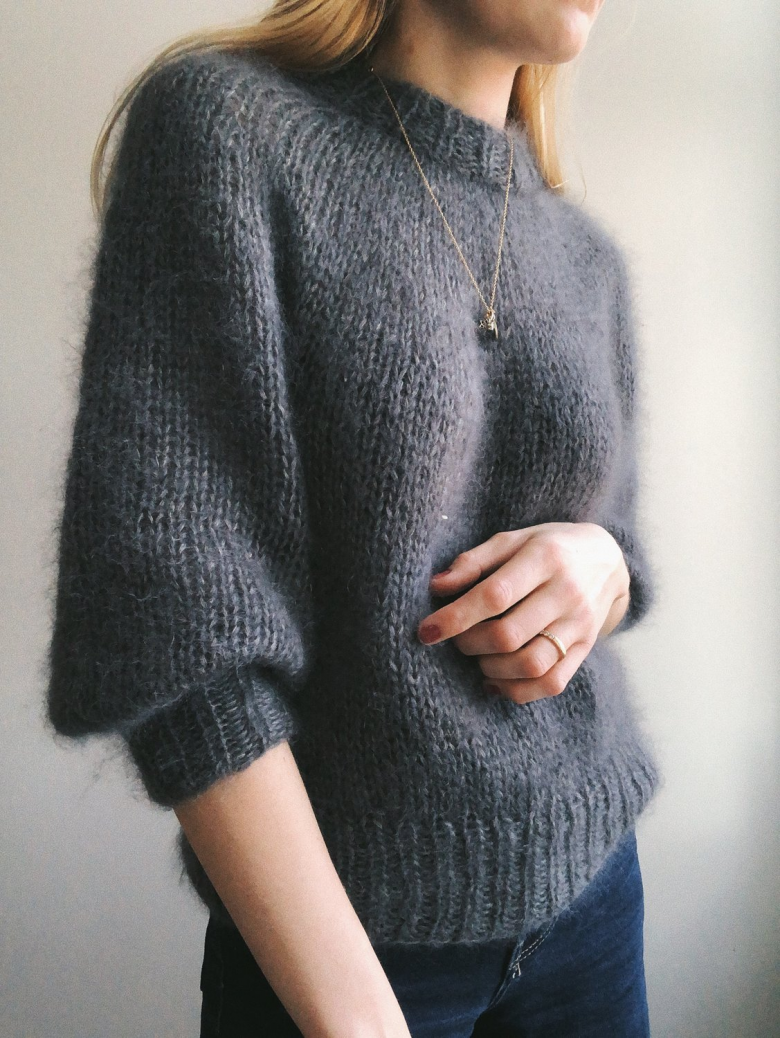
Mohair is an excellent material not only for knitting warm winter or demi-seasonal garments, it can be used to create many original summer patterns. Knitting with mohair is a fascinating and enjoyable activity, given the specifics of knitting with mohair, anyone can make friends with this yarn, and as a reward in his closet will appear a favorite and exclusive thing.


